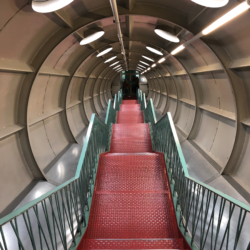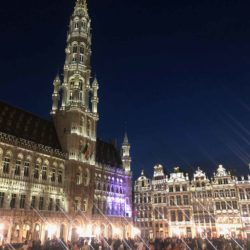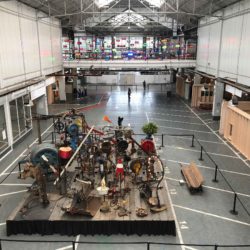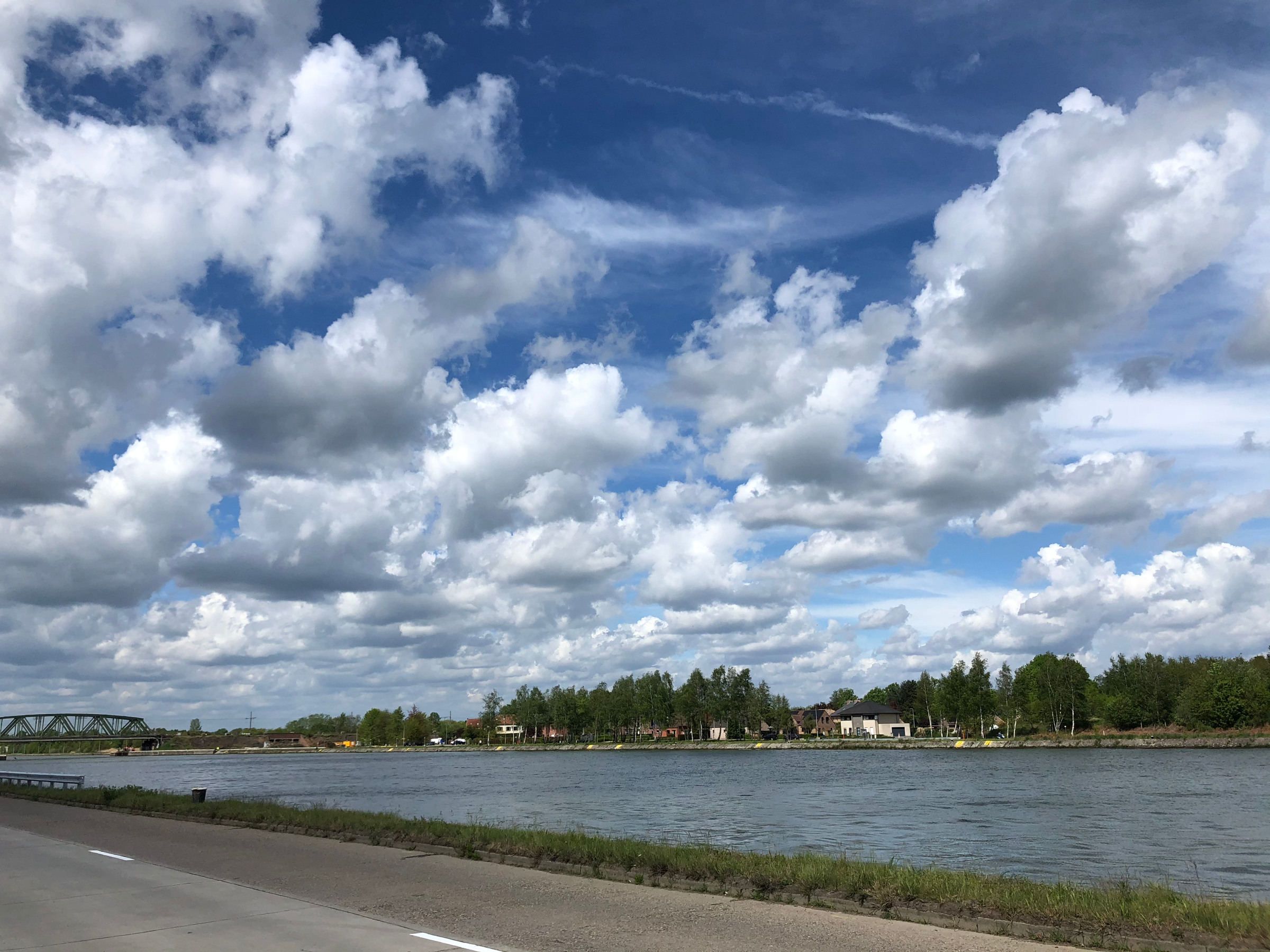
After spending several days in Brussels, it was time for a day trip to a regional capital, but which one should I choose? Remember that Brussels is an artificial combination of Flanders and Wallonia, the Flemish-speaking northern region and the French-speaking southern region, respectively. It is the only area in Belgium where both languages are official languages and once you venture out into either Flanders or Wallonia, only the corresponding culture will be found. When researching the various Belgian provincial capitals, I was immediately drawn to Hasselt, the capital of Limburg, in eastern Flanders. Hasselt is famous for it’s 100+ street art murals painted by artists from around the globe, as well as having the largest authentic Japanese garden in all of Europe. An added bonus for architecture geeks is their Neo-Art Nouveau courthouse, which was just enough to tip the scales in Hasselt’s favor. (It’s completely normal to travel to city to see its courthouse, right?) Unfortunately this meant I would miss out on experiencing Wallonia, but that only ensures I have a reason to return.
From Brussels to Hasselt
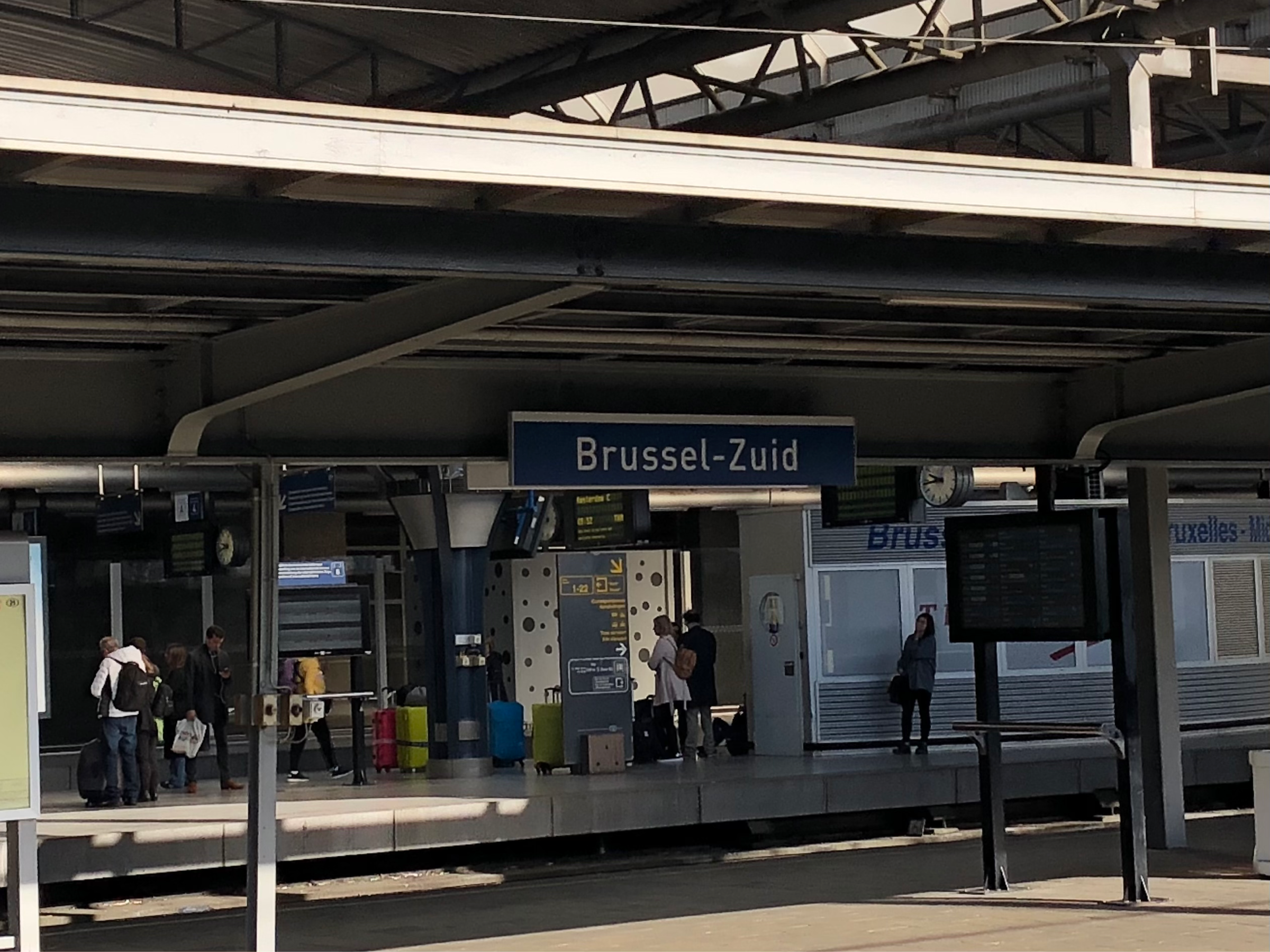

The dual languages in Brussels can cause a bit on confusion when it comes to figuring out the placement of the three train stations in the capital. From north to south, the stations are as follows (French/Flemish):
- Bruxelles-Nord/Brussel-Nord
- Bruxelles-Centrale/Brussel-Centraal
- Bruxelles-Midi/Brussel-Zuid
The first two line up as Brussels-North and Brussels-Central, but in French, the third station is Brussels-Mid and in Flemish it is Brussels-South. Be aware that when asking for directions, a Flemish speaker will tell you to go to the South and a French speaker will point you towards Mid, which is not in the middle of the city (Central is!), but the south. If you need to take a train, make sure you pay attention from which station it will be departing. There’s nothing worse than arriving at a station with just enough time to spare, only to realize you’re at the wrong one. All three service domestic destinations, but the majority of international trains come through Bruxelles-Midi/Brussel-Zuid, including those to and from London, Paris, Amsterdam and Luxembourg City.
Just to keep you extra on your toes, you’ll note that the train stations don’t actually have the word train station in their titles. In French, a train station in the north would normally be called Gare du Nord, but in Brussels, Gare/Station titles are reserved for the metro stops associated with each of the train stations and not the stations themselves! If you ask a taxi driver to take you to “Gare du Nord,” you will be heading to the Brussels Metro!
Metro stops near each station in French and Flemish are as follows:
- Gare du Nord/Noordstation
- Gare Centrale/Centraal Station
- Gare du Midi/Zuidstation
This is where doing a little bit of research before traveling to a new city can really pay off. Being too prepared can take the spontaneity out of travel, but the opposite can lead to headaches that could easily have been avoided.
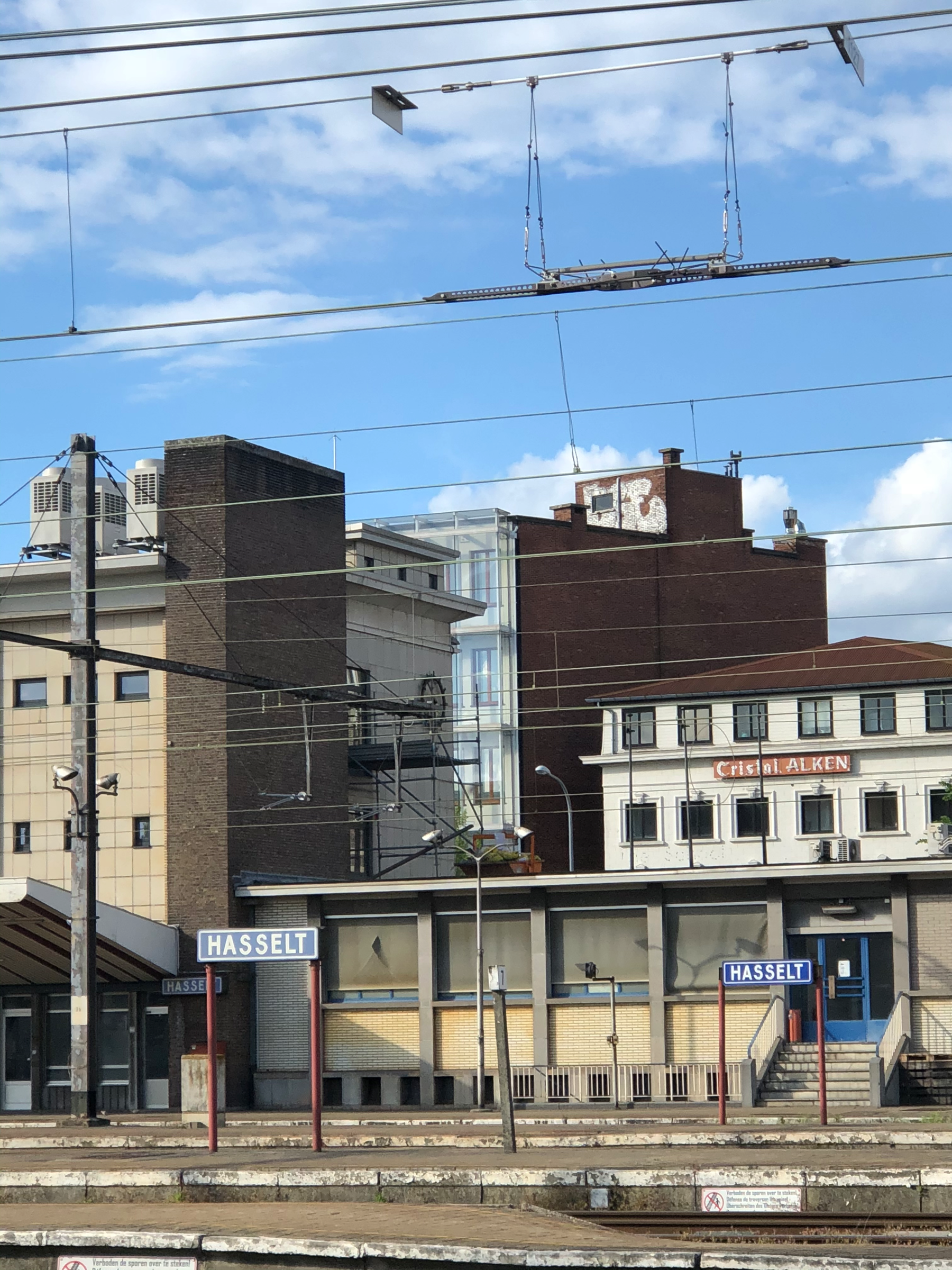
Trains run between Brussels and Hasselt about once an hour during the day and the journey should take roughly one hour and fifteen minutes. My round-trip ticket cost 25€ ($30US) and can be easily purchased on the day of at the train station. (I booked all my international train tickets in advance of my Benelux trip, but there’s no need for this level of preparation when taking frequent, domestic train rides.)
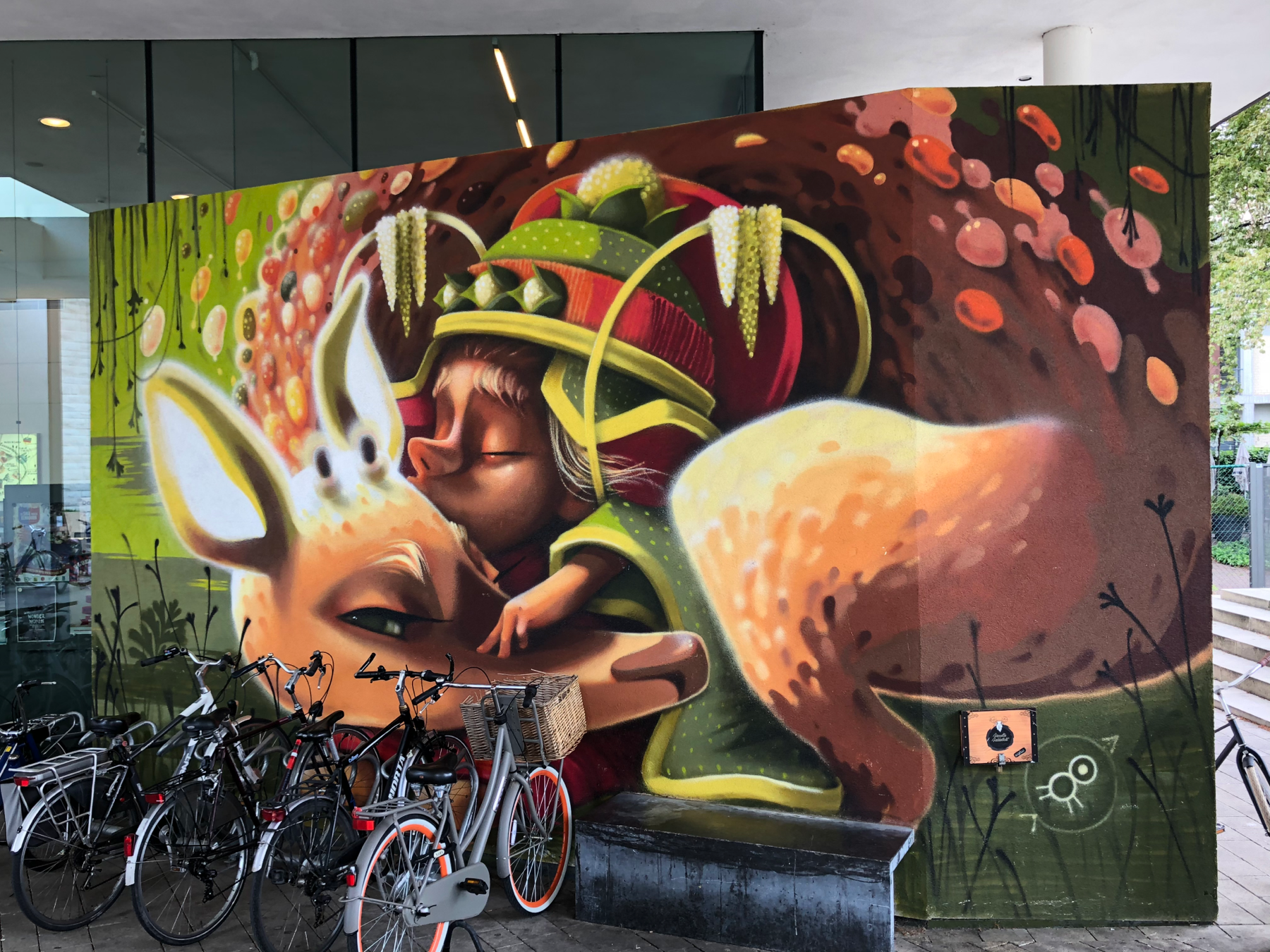
As I mentioned, Hasselt is not only a street art hotspot in Belgium, but for the entire world. Every year there is an international street art festival where artists from around the globe are invited to add to the city’s already vibrant tableau. Make your first stop in Hasselt the tourist information center, where the helpful workers will give you a paper map (yes, those still exist), with a marked walking/cycling route that will take you past 40 street art highlights. There’s also an app you can download that adds about 40 more to the list; there are well over 100 total murals in Hasselt.
The route begins at the info center with the above piece by Garciela Gonçalves Da Silva aka Animalito, an Argentine artist who is known for her warm and fuzzy scenes featuring children and animals. Rather than hit you with all the street art at once, I will pepper them in throughout this post alongside the historical sights, just as you would experience them walking around the city.
Dusartplein (Dusart Square)
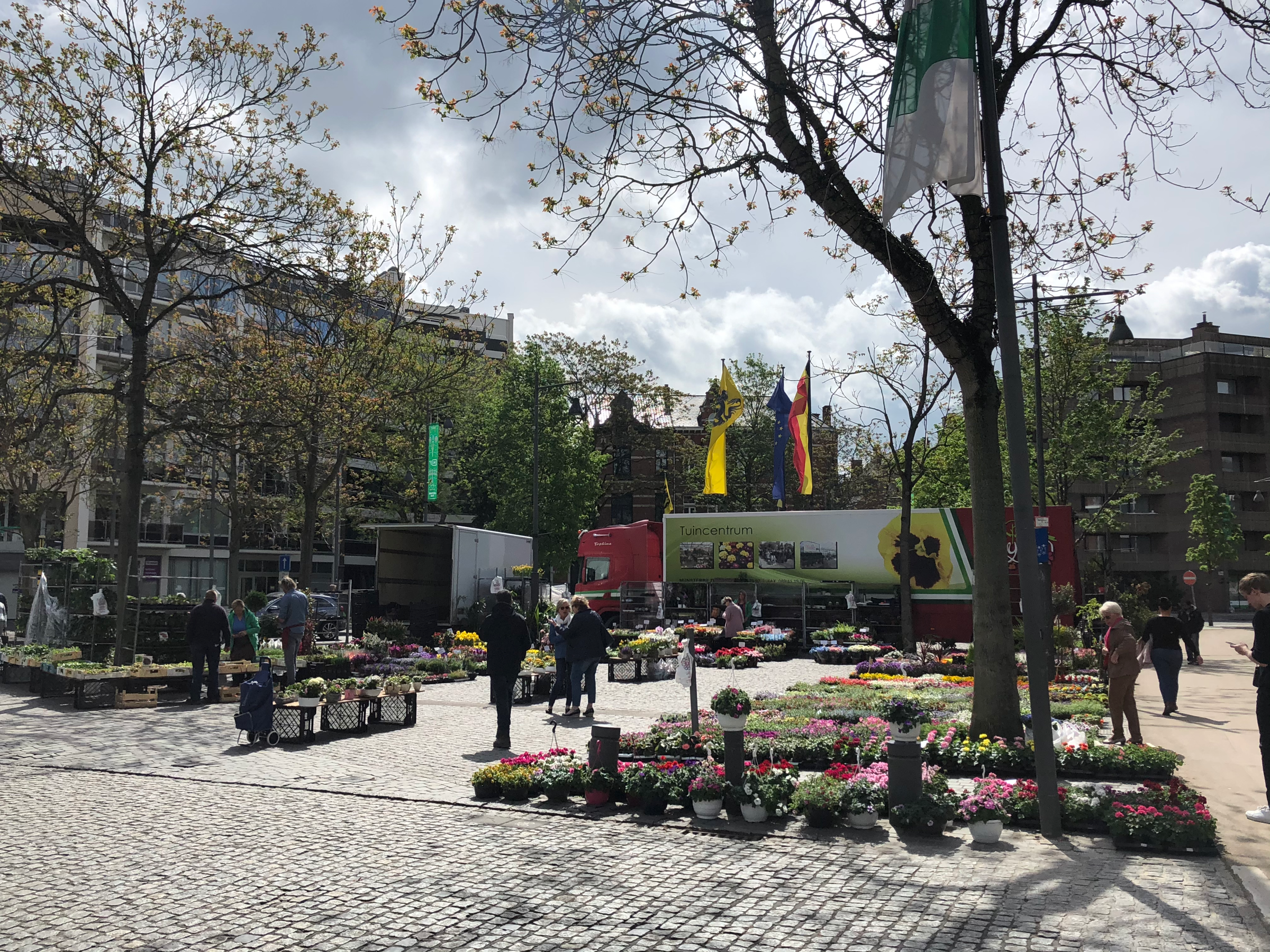
(You’ll notice that the French translations have dropped away here in Flanders, but as you’ll shortly see, a third option can be added to the mix…)
Here in the lovely Dusartplein you’ll find a market every Tuesday and Friday, with a special antique and flea market held on Saturdays. In winter months, the square is turned into an ice skating rink. The spring Friday I visited, Dusartplein was decked out with flower sellers and a garden center. Before being renamed for Colonel Dusart, the square was originally called Wagenplein/Place d’Armes (the French had a greater influence at the time)/Plasdam, or an assembly point for troops to practice military drills. And what of Plasdam? This is the translation in Limburgish, a recognized minority language in Limburg Province, which is still spoken in Hasselt today. Pick up a few phrases in Limburgish if you really want to score some brownie points with the locals!
Kolonel Dusart Kazerne (Arsenal of Colonel Dusart)
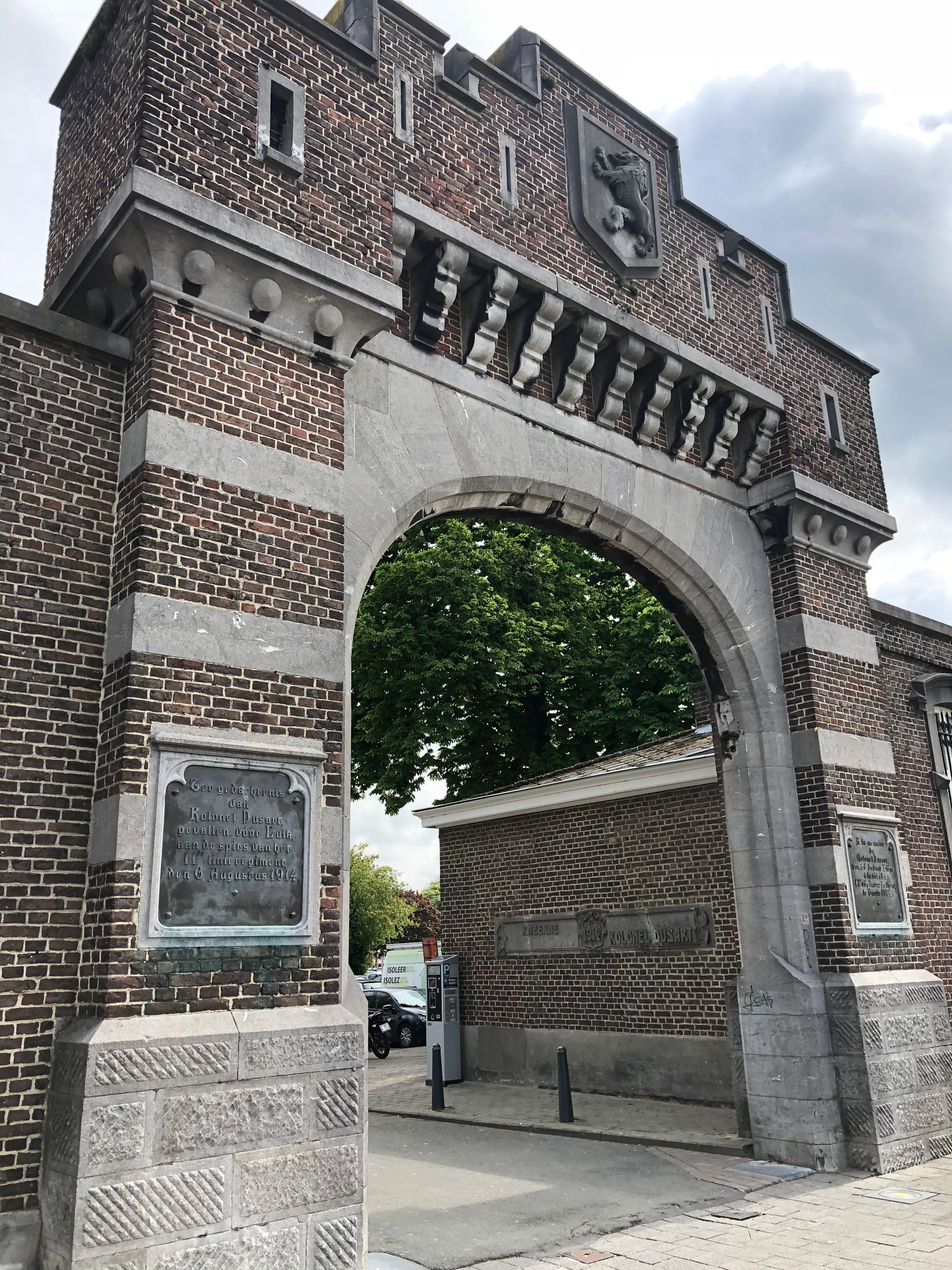
Behind the square once stood a set of military barracks and an arsenal, which were both under the control of Colonel Dusart, who fought against the Germans in WWI. All that remains of the military installation are the front gate and a watch tower, but they add appropriate atmosphere to the square.
Monument Leopold II
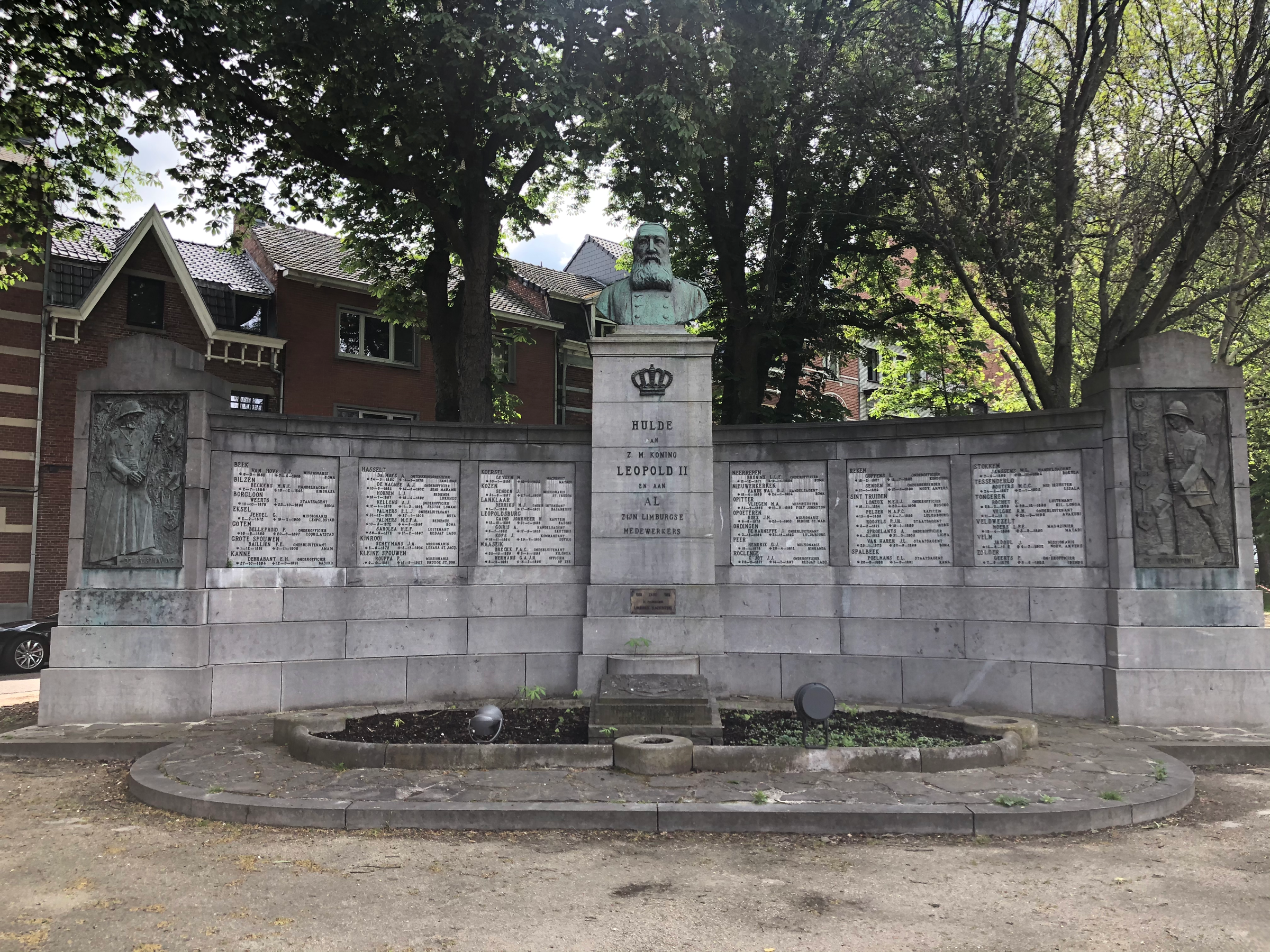
More controversial is the Monument Leopold II on the other side of Dusartplein. This two-piece monument, which was erected in 1952, honors the Limburgers who died in the Congo Free State from 1885-1908. Before the Democratic Republic of Congo officially became a Belgian colony in 1908 (as the Belgian Congo), it existed as a piece of King Leopold II’s private property known as the Congo Free State. Leopold claimed he was bringing both “liberation” (ha!) and “civilization” (double ha!!) to the Congolese. He sent so-called pioneers to the Congo Free State to “tame” the people and exploit their resources. Beyond the gross ethical violations of colonizing a foreign land, Leopold wasn’t even doing it to better the Belgian state, but rather to amass personal wealth. Nevertheless, the Limburgers who followed his command were seen as heroes and martyrs to the cause.
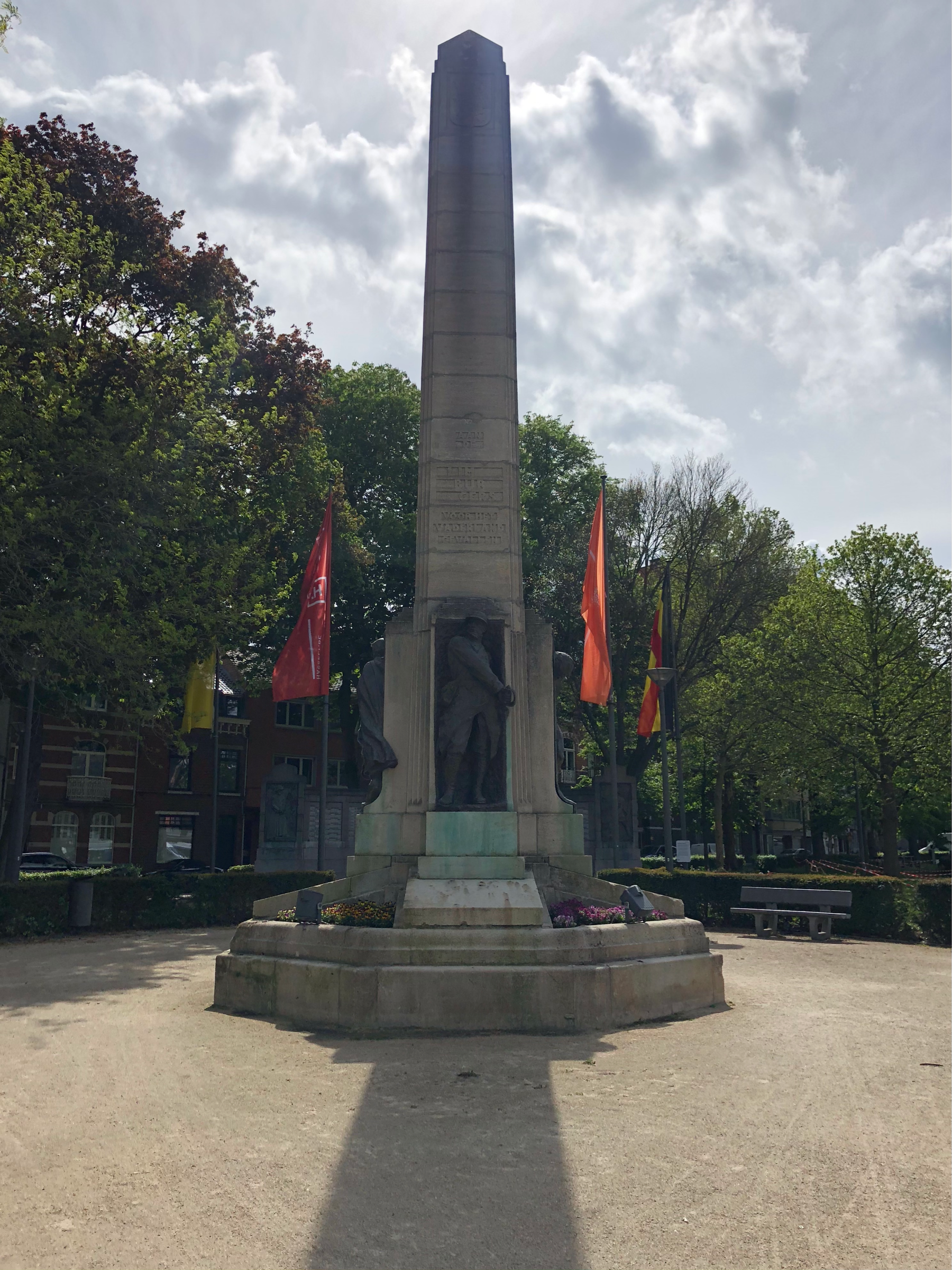
Of course, our views on colonialism have changed quite a bit in the intervening 70 years since the monument was built. Talk of removing the pieces from such a central location circulated at city council meetings. Ultimately, it was decided that the monuments would remain where they stood to further discussion amongst residents and visitors alike about Belgium’s checkered past.
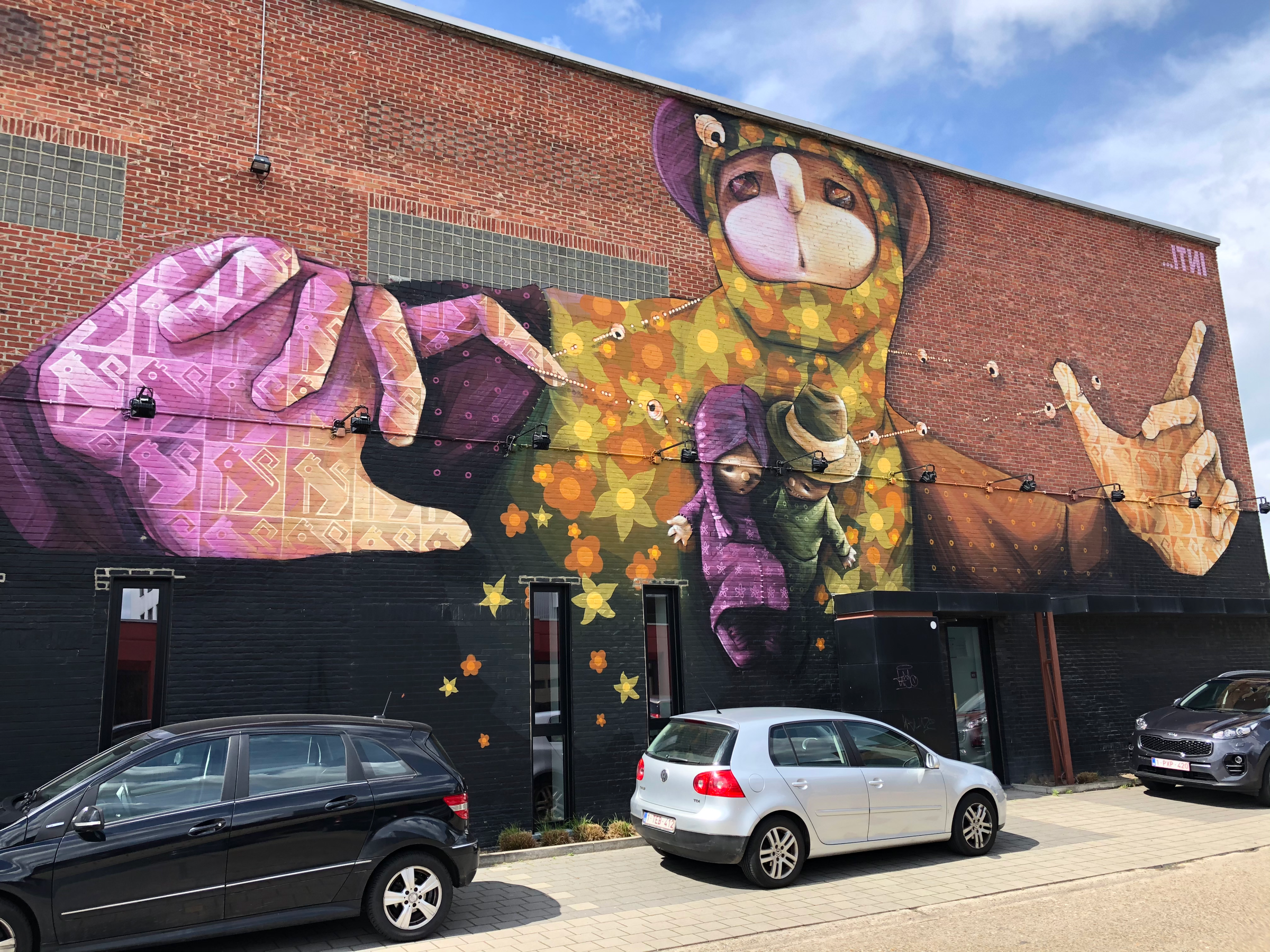
Inti, which is the Incan word for sun, is a Chilean artist who prominently features South American folklore and symbols in his art. Here, a mystical being is toying with the fate of two humans. Right as their necklace string is snapped, the figures and beads are suspended in space, preparing to fall to the sidewalk below.
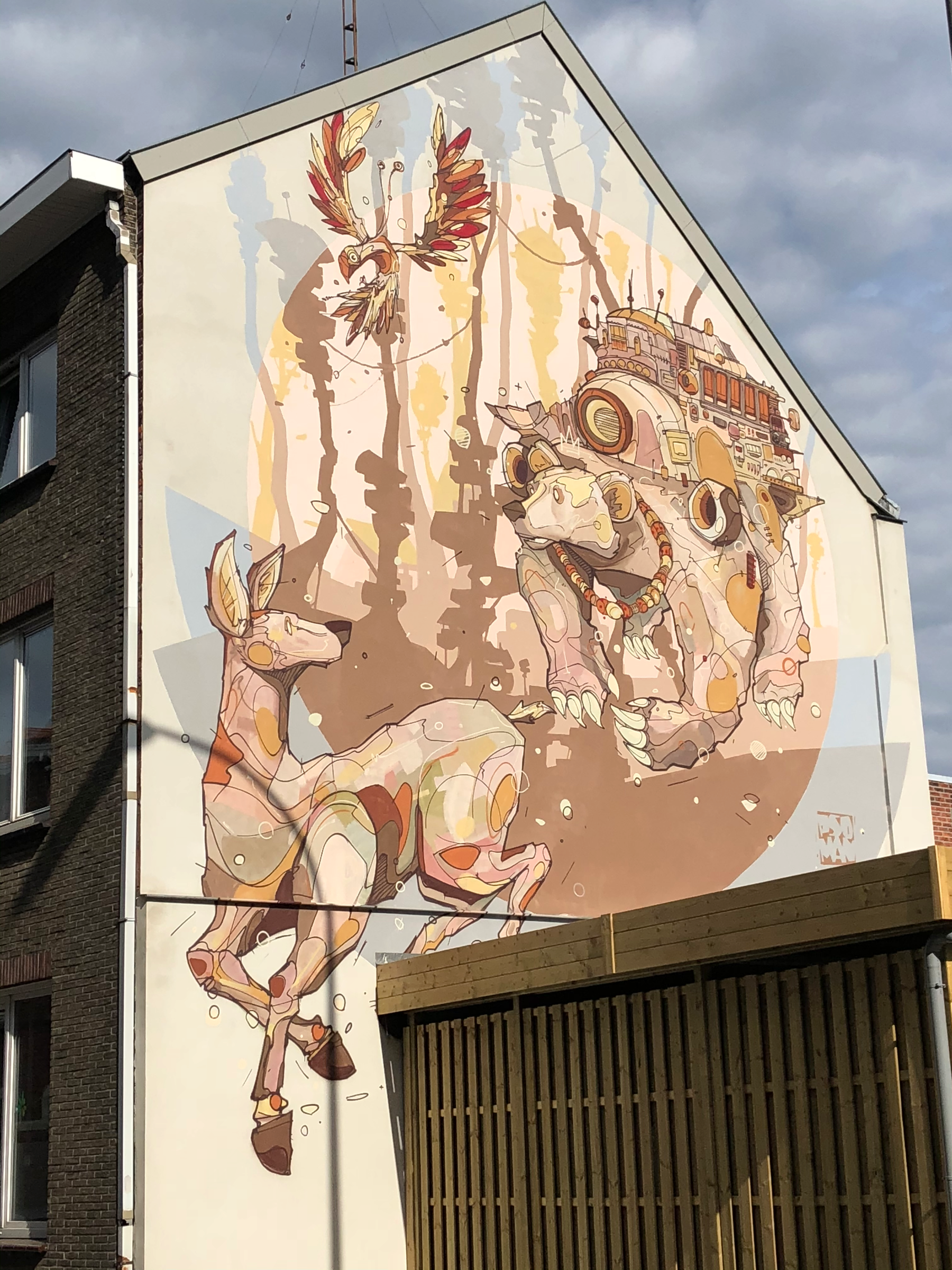
Belgian artist PsoMan, who also is a tattoo artist, has developed a following for the distinctive way he paints animals, as if they were roughly craved from wood or chiseled from stone. Although he uses paint rollers on the sides of buildings, his painting style is able to effectively mimic that of a watercolor painting on canvas. His was one of my favorite murals in Hasselt.
Gelatinefabriek Hasselt (Hasselt Gelatin Factory)
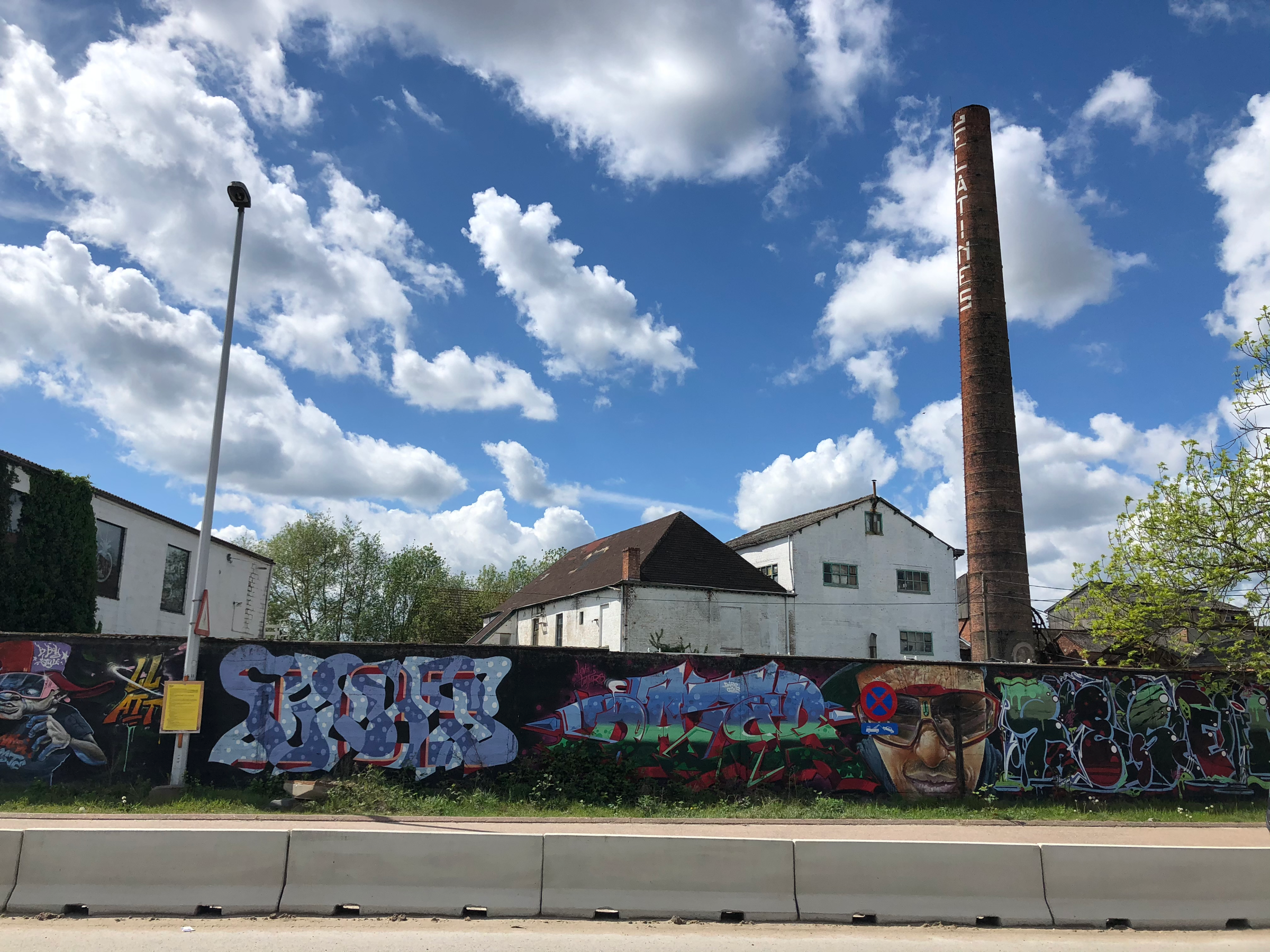
Opened in 1893, the Gelatinefabriek went on to become the largest employer in Hasselt. During the 1930s, the plant was the largest producer of gelatin in the world, but by 1969 the company moved their headquarters to Ghent, causing hundreds in Hasselt to lose their jobs. Today most of the former factory has been demolished, with only the offices and the iconic 60m (196ft) tower still standing. Street artists have painted over the walls surrounding the factory, blending the old with the new.
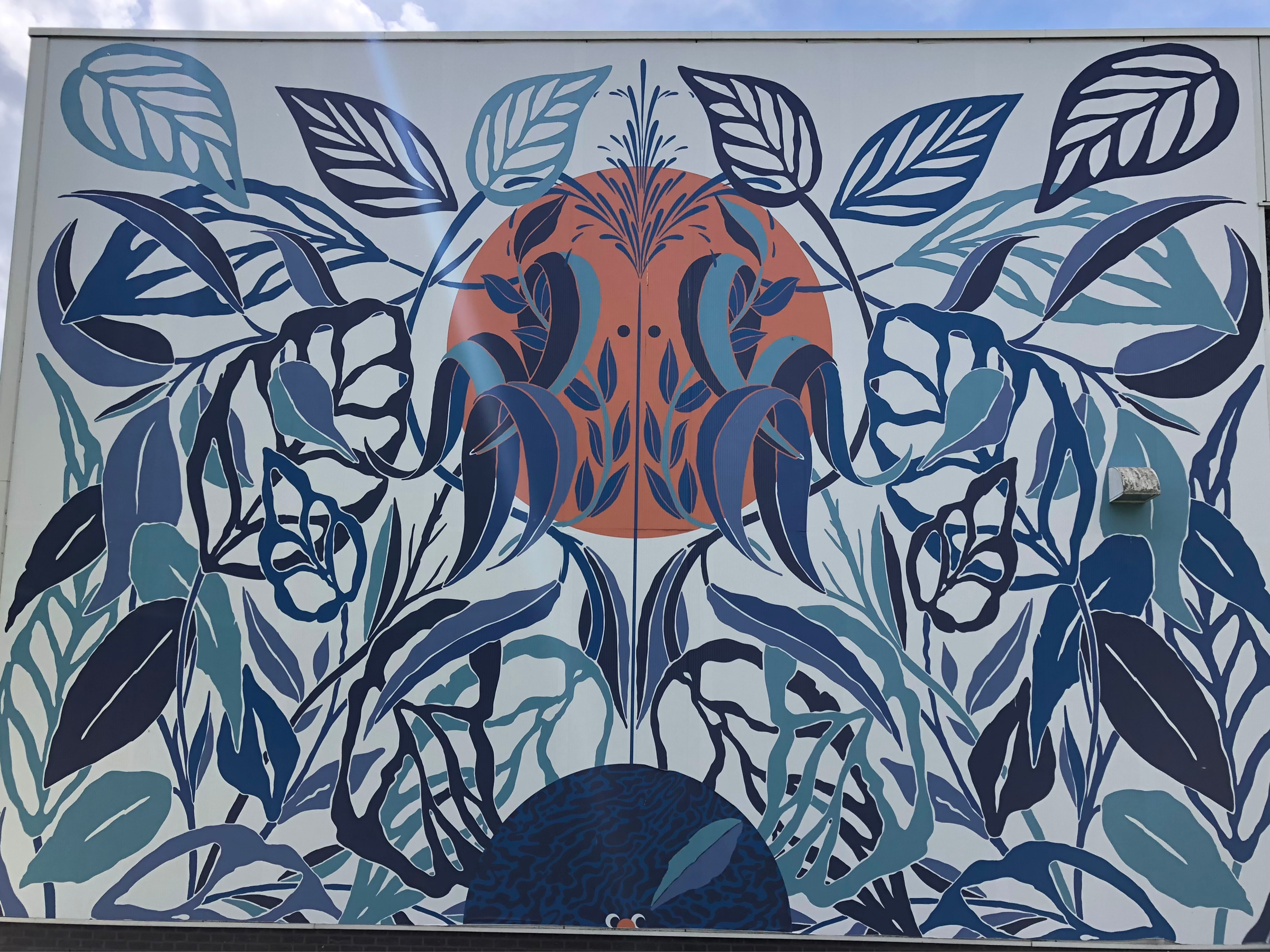
Belgian Merijn Hos likes to create graceful and tranquil street art, like this piece found on school grounds. I had some difficulty locating this mural and finally some students, who I sensed were used to confused tourists with their noses buried in a map, yelled out that it was around the corner of the building, facing the highway. People in Hasselt were very friendly and I had more than one person flag me down and point me towards a mural that they knew wasn’t on the map.
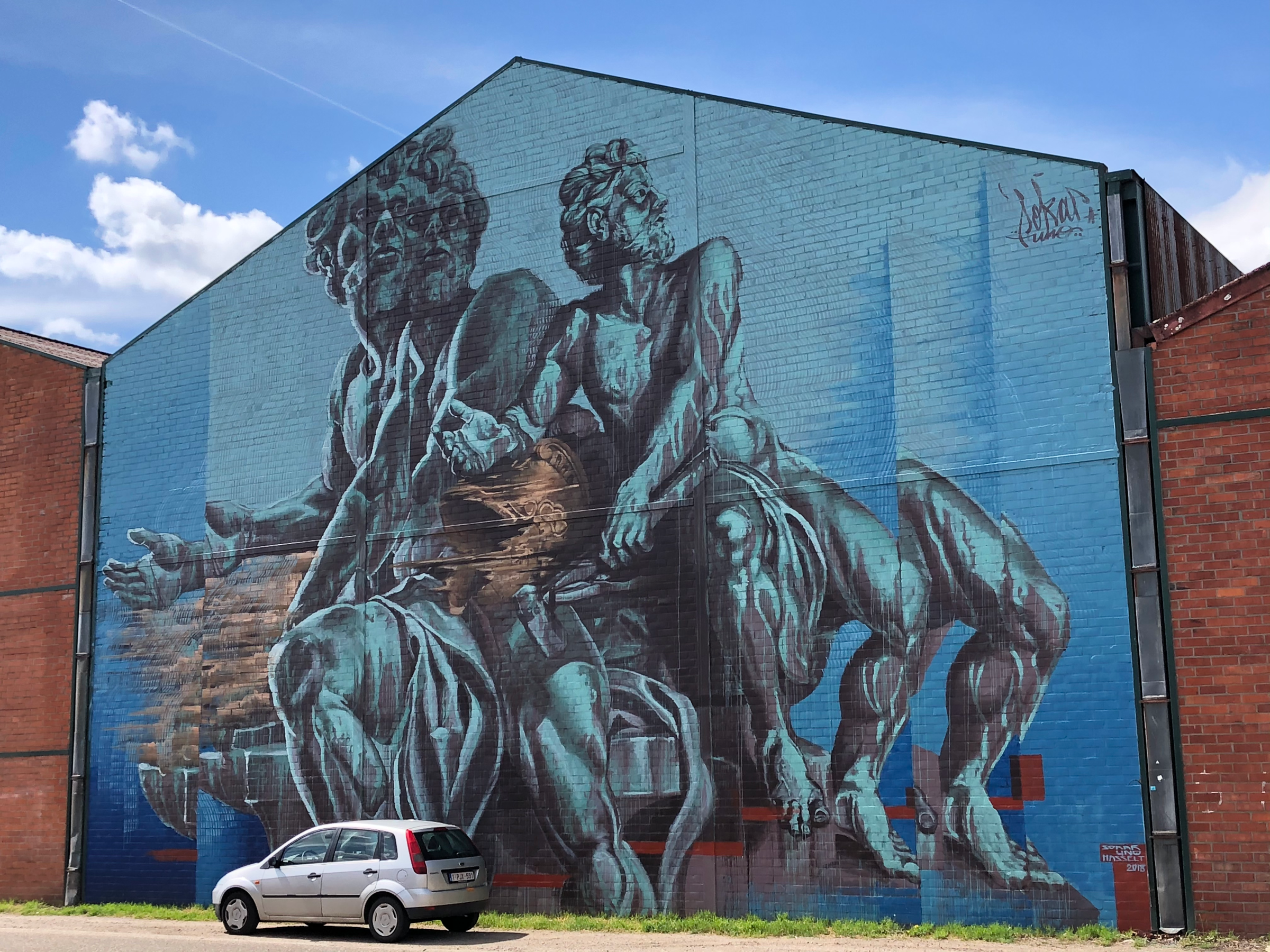
This piece by German artist SokarUno is typical of his work which takes realistic representations of human bodies, breaks them apart and then splices the fragments back together again. Here you can see just how immense some of these murals are, using the car below to scale.
Sint-Quintinus Kathedraal (Cathedral of St. Quentin)
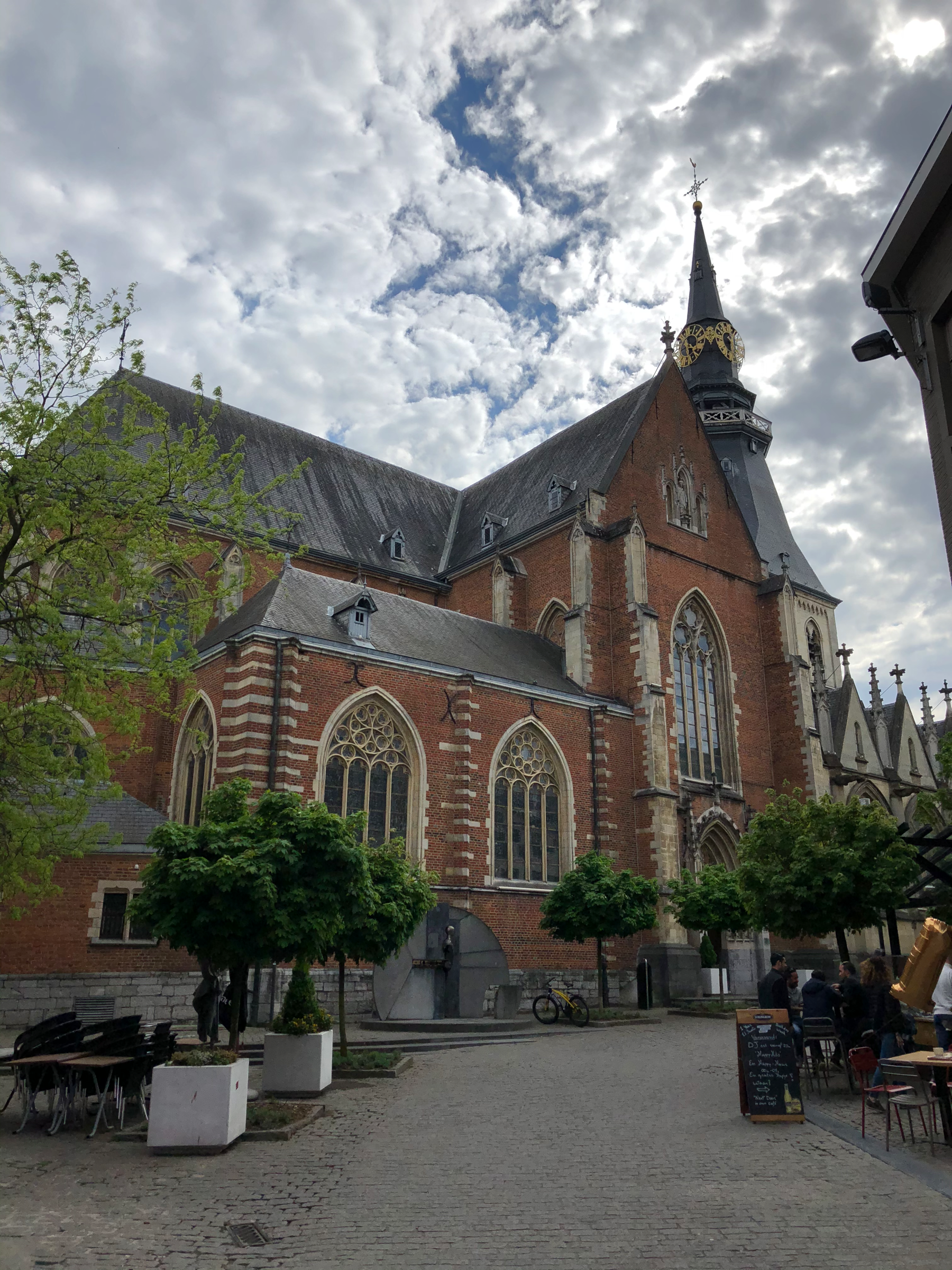
In the heart of Hasselt you’ll find Sint-Quintinus Kathedraal, sometimes simply referred to as Hasselt Cathedral. Construction began on the church in the 11th Century in the Romanesque style, but different pieces have been added over the centuries (Gothic stained glass windows in the 15th Century; a Baroque tower in 1725), creating a mishmash of styles that finally was designated with “cathedral” status in 1967. The building is near the Grote Markt, or central square, which is brimming with activity amidst the flurry of cafes with outdoor seating.
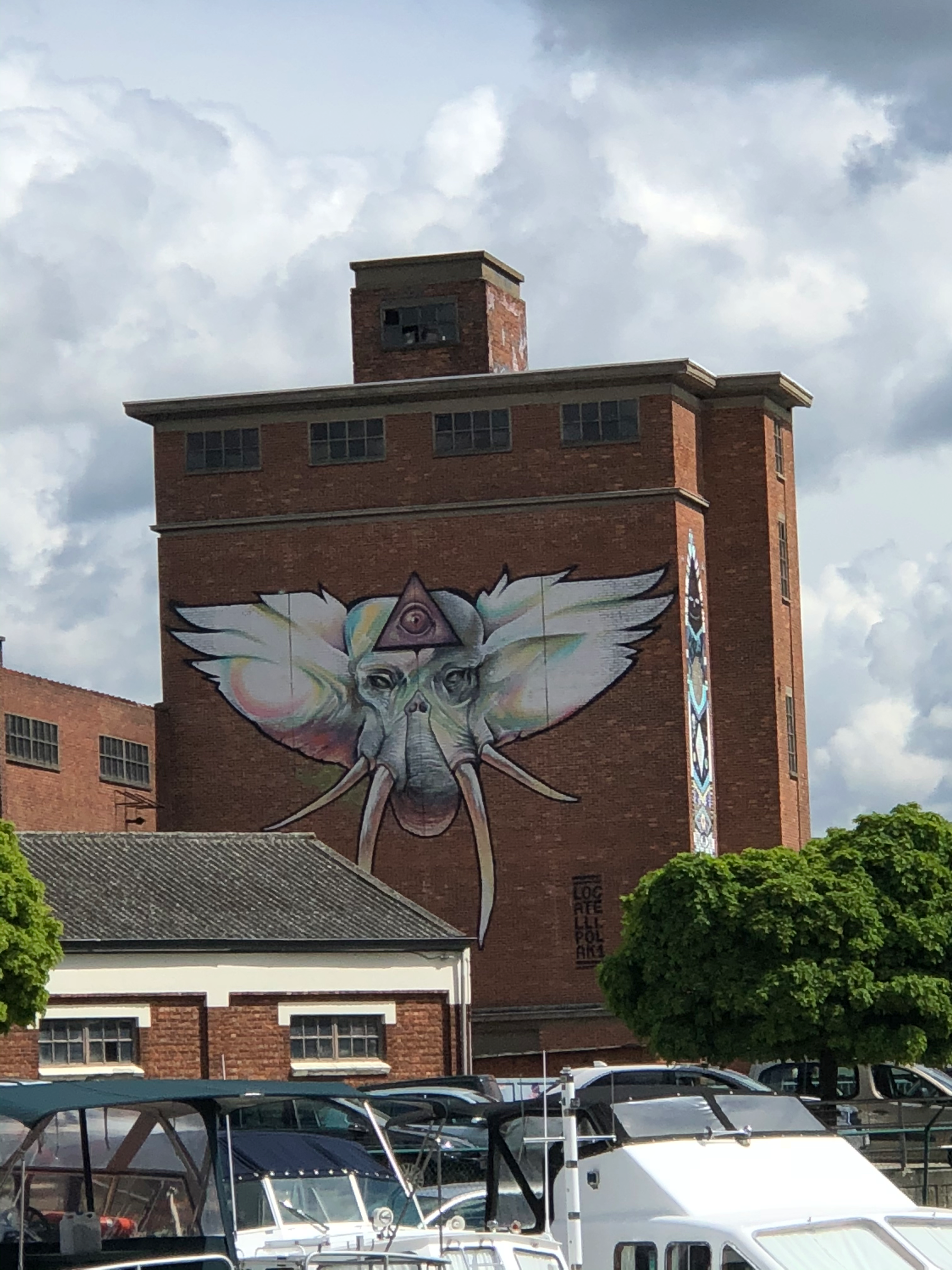
Above is a collaboration between Belgian artist Steve Locatelli and Polish artist Polak One. Both work with bright, psychedelic colors, and their collective artistic prowess somehow whipped up a four-tusked elephant, with a third, all-seeing eye! For being a decade old, the street art in Hasselt is very well cared for and preserved.
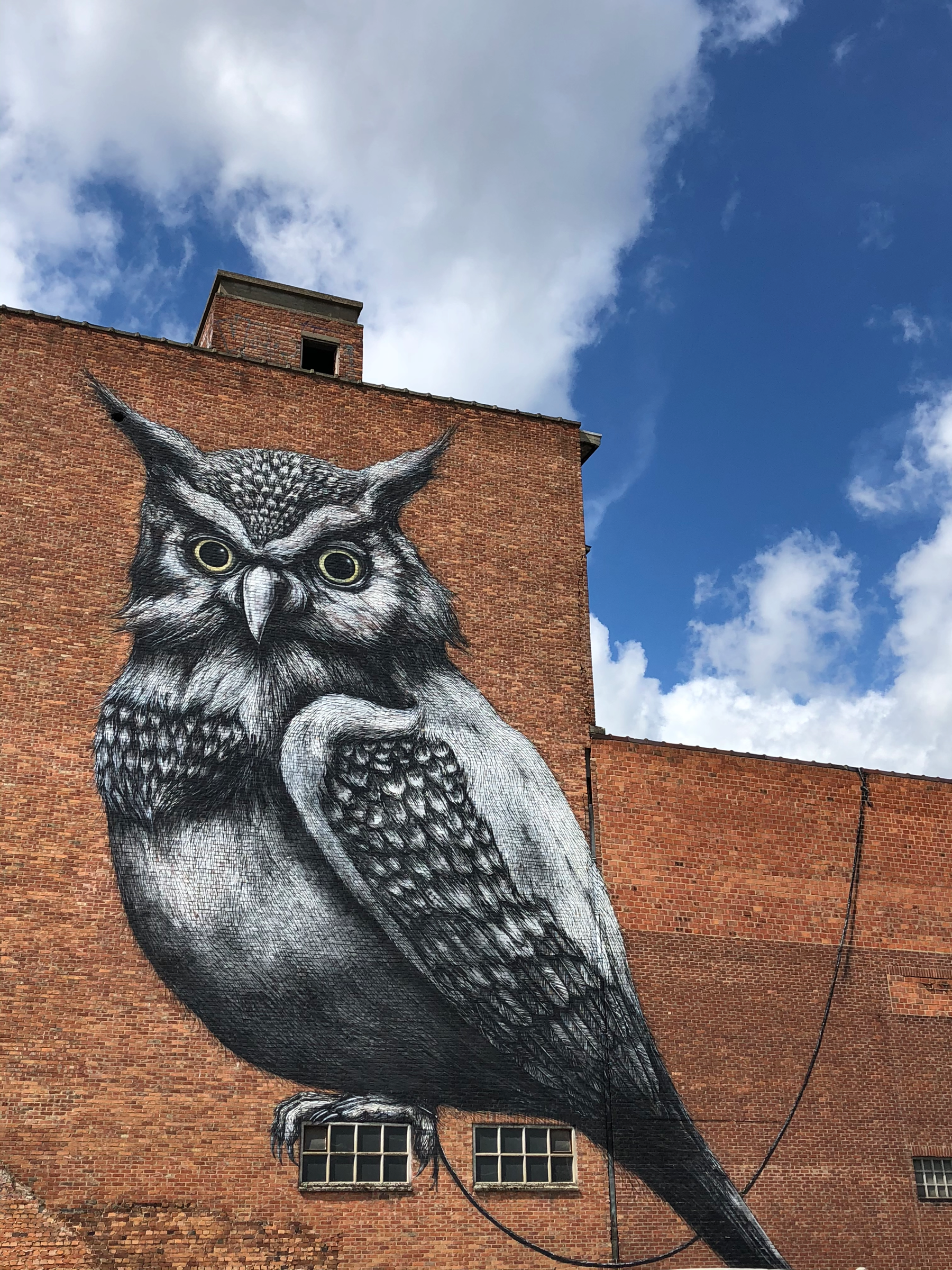
This remarkably detailed owl by Belgian artist ROA is probably one of the most famous murals in Hasselt. ROA has created works all over the world and although the name was new to me, many of the European street art fans I encountered were very familiar with his designs. ROA likes to paint black and white animals and waits until he reaches a destination to decide which creature calls out to be incorporated into the building’s facade. Notice how his owl is perfectly perched on the window frame, as he makes eye contact with the viewer below.
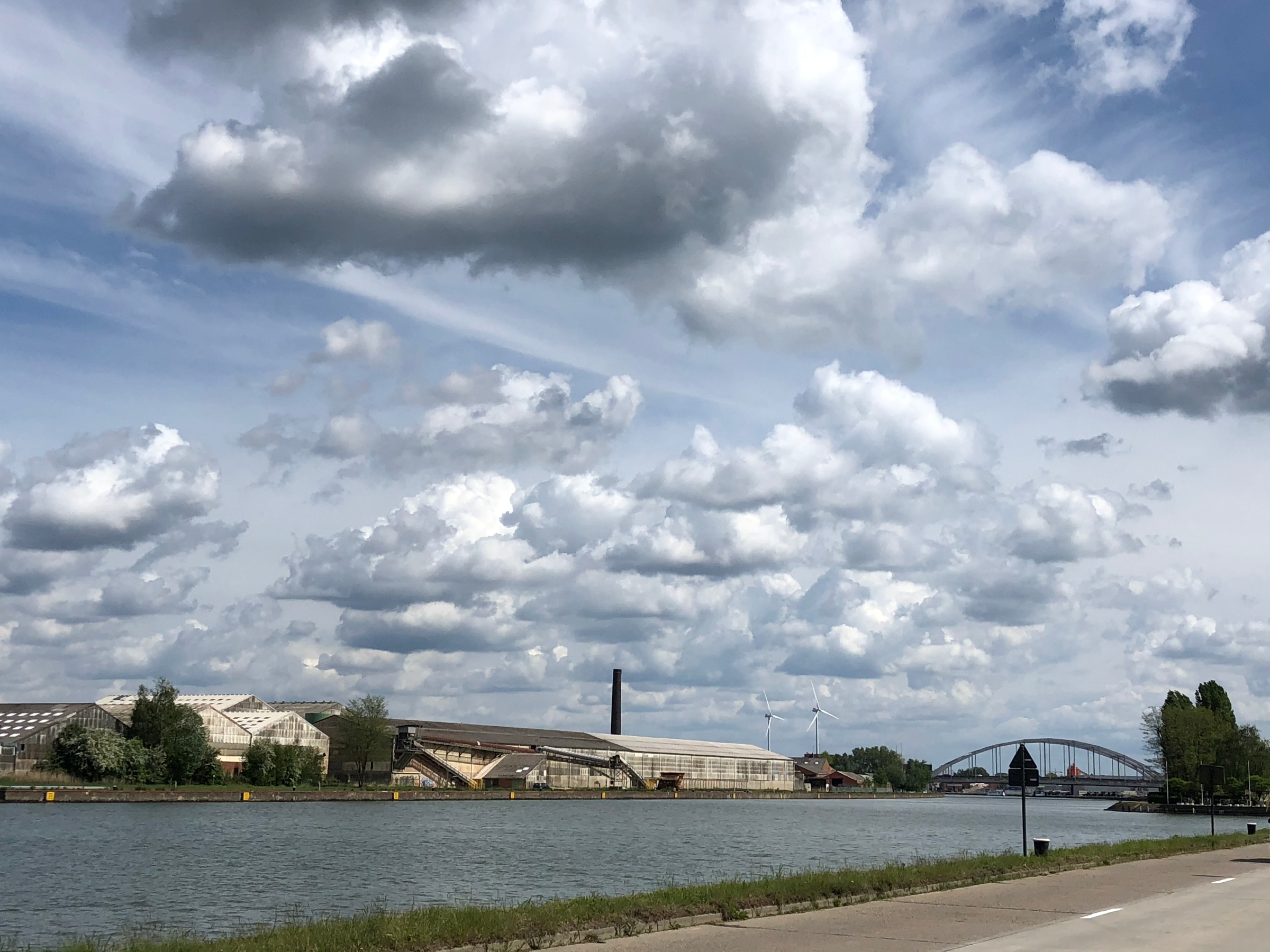
Part of the street art tour takes you along the Albertkanaal, just north of Hasselt’s medieval inner ring road. Two things you get used to pretty quickly in the Benelux countries are wind turbines and solar panels. There is more than a concerted effort to use green power in these nations that, quite frankly, leaves many of its citizens baffled why we haven’t similarly embraced these methods here in the United States. The coal-burning chimneys have long since been abandoned, as Belgians have turned to the skies above for energy rather than the earth below.
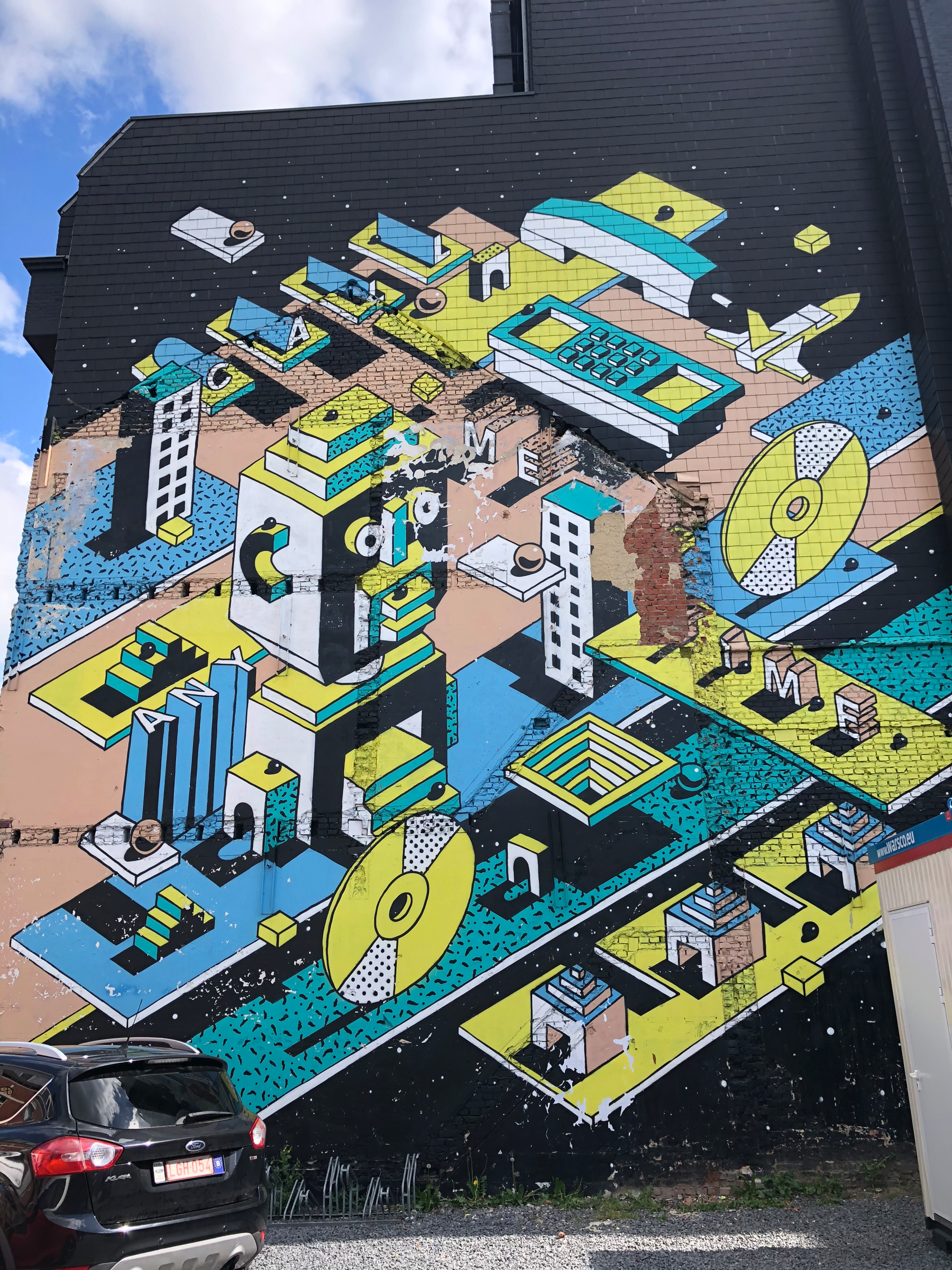
Dutch artist Johan Moorman created this mural for the 2016 Street Art Festival in Hasselt. He is known for his “retro futuristic” designs with strong lines and machines incorporated into cityscapes. Above you can see a telephone with two reels from an answering machine, with the message to “Call Me Any Time” rising up from the pavement.
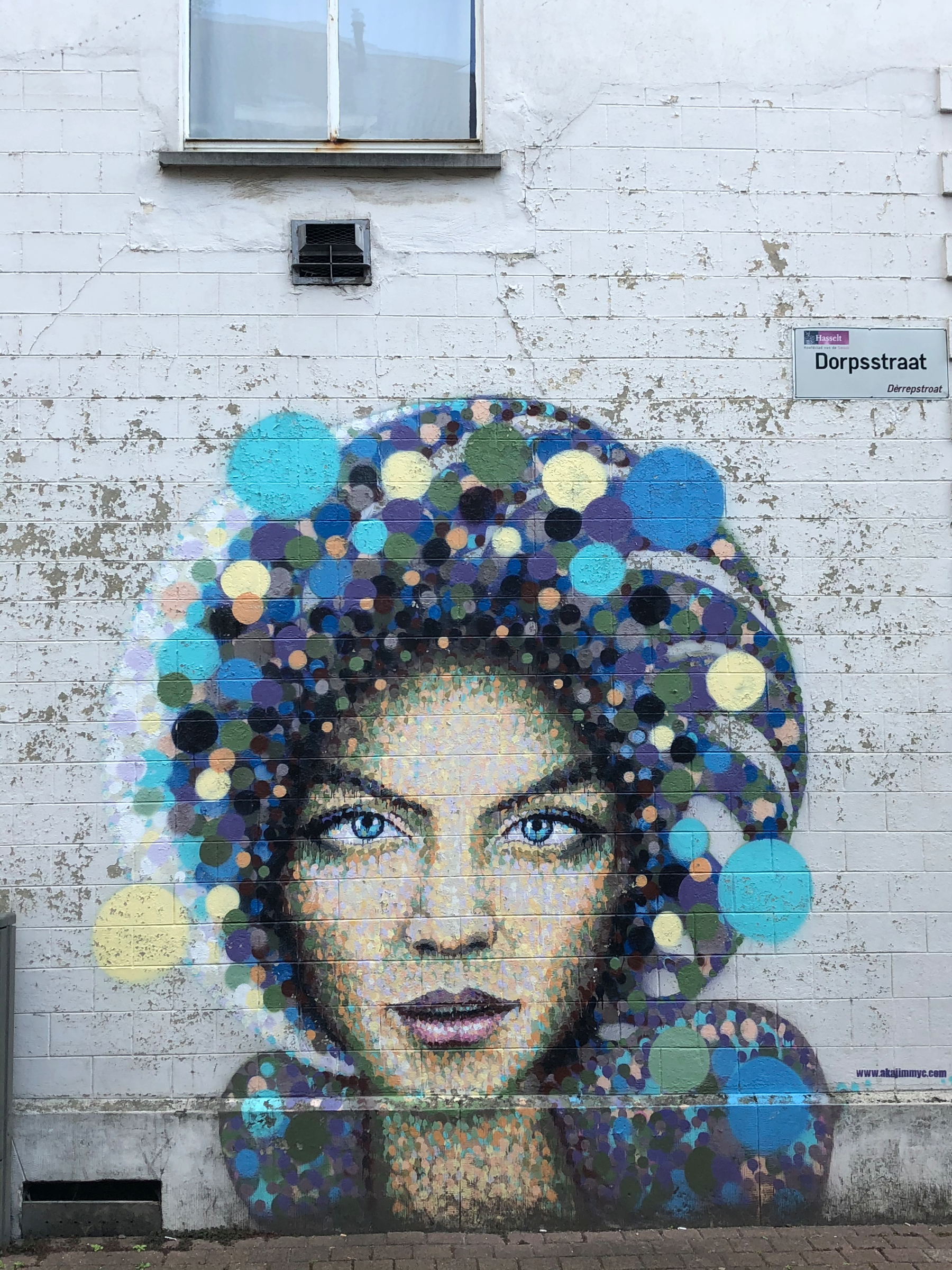
Above is one of two pieces by English/Australian artist JimmyC, who has developed an aerosol pointillism technique he refers to as “drip paintings.” Sondheim, if you’re listening, it might be time for a sequel: Sunday in the Park with JimmyC!
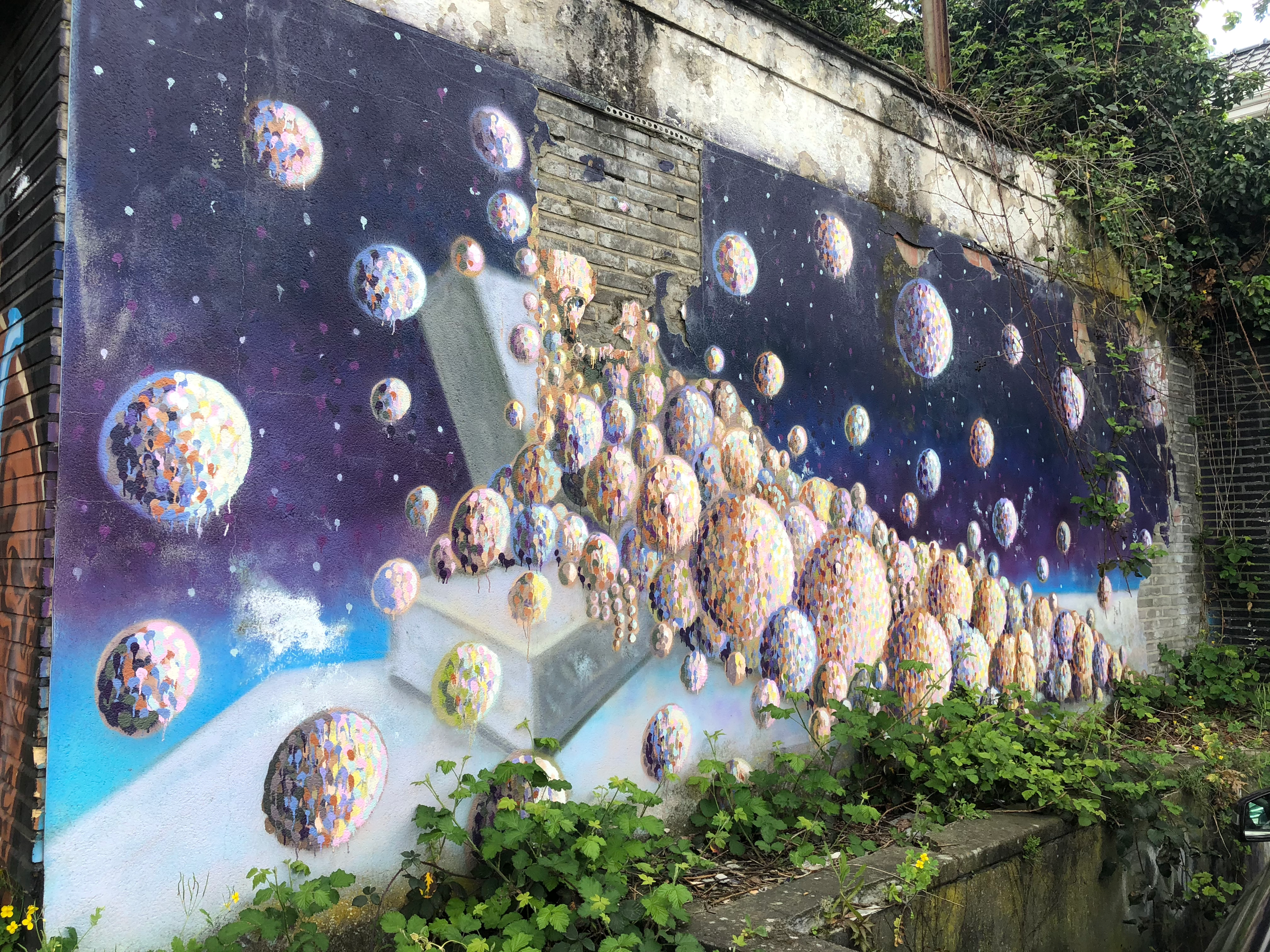
I’m not sure if all of these works are officially untitled, but although the tourist office map and app have information about the artists and the dates they were installed, none of them carry any titles. I guess that means we get to create our own, making that can be part of the fun. Unlike some of the more “serious” contemporary art you’re likely to find in a museum, street art is more about evoking an emotion in the viewer, often with a sense of humor. Reading the artist comments in the app you’ll find that most are very hesitant to spell out what their works “means,” if anything at all. They want the viewer to take what they will from their work without commentary or outside influence. Even the hint of a title is nudging the viewer too far in one direction or another.
Rechtbank van Eerste Aanleg Hasselt (Hasselt Court of Justice)
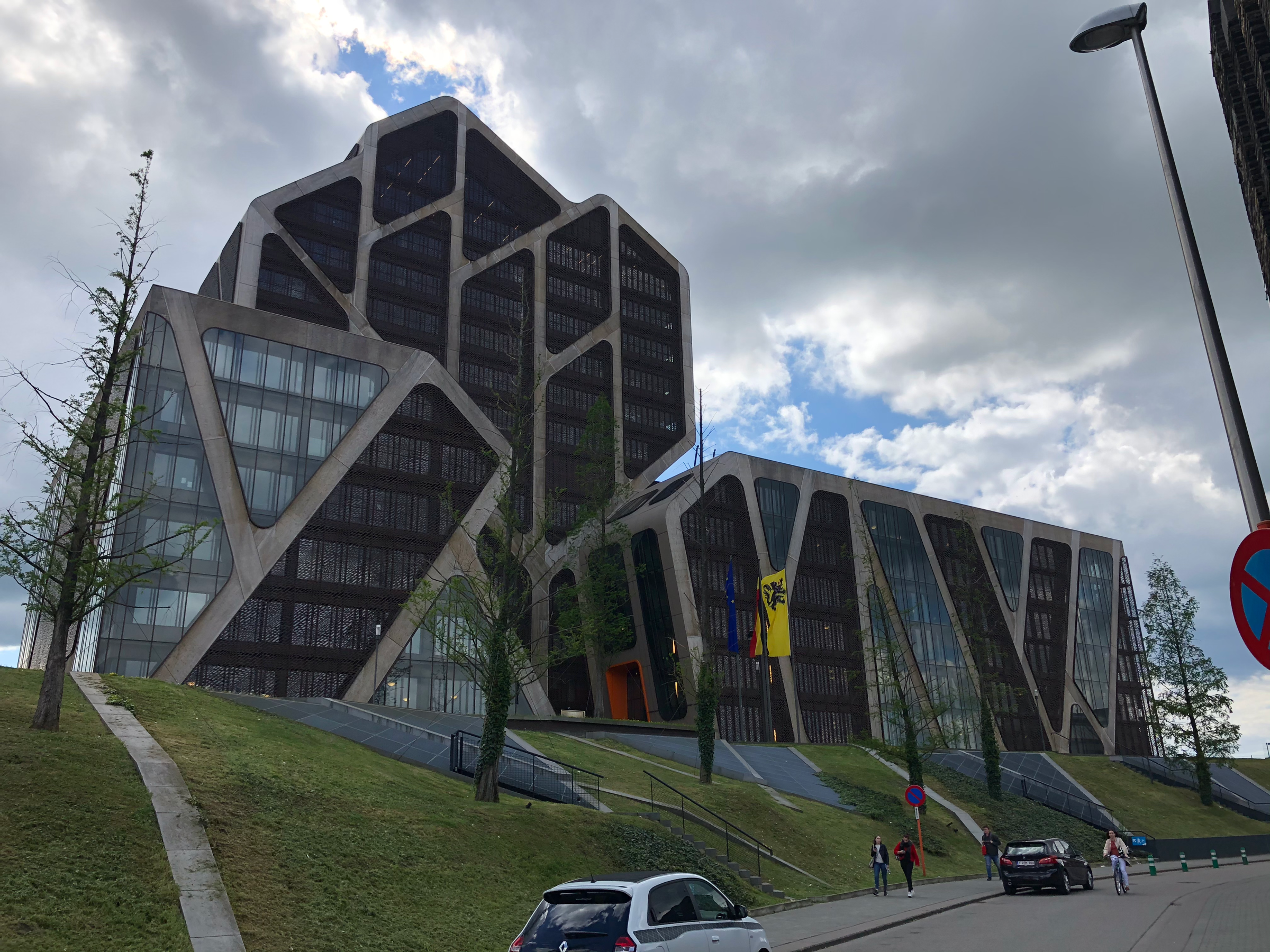
Built between 2007-2013, the Rechtbank Hasselt is a wonder to behold. The courthouse was constructed on the site of a former steel plant, and the designers, J. Mayer H. Architects, wanted to reference the old industrial area in their plans. The sloping concrete lines and metal window ornamentation take their cues from the turn-of-the-century Belgian Art Nouveau movement. The Hasselt coat of arms features a hazelnut tree, which is also “growing” out of the center of the building. In the Low Countries during medieval times, large trees were associated with places where a judge would go to “speak justice” to the people. The imagery of trees and courthouses is, forgive me, deeply rooted in Belgian history.
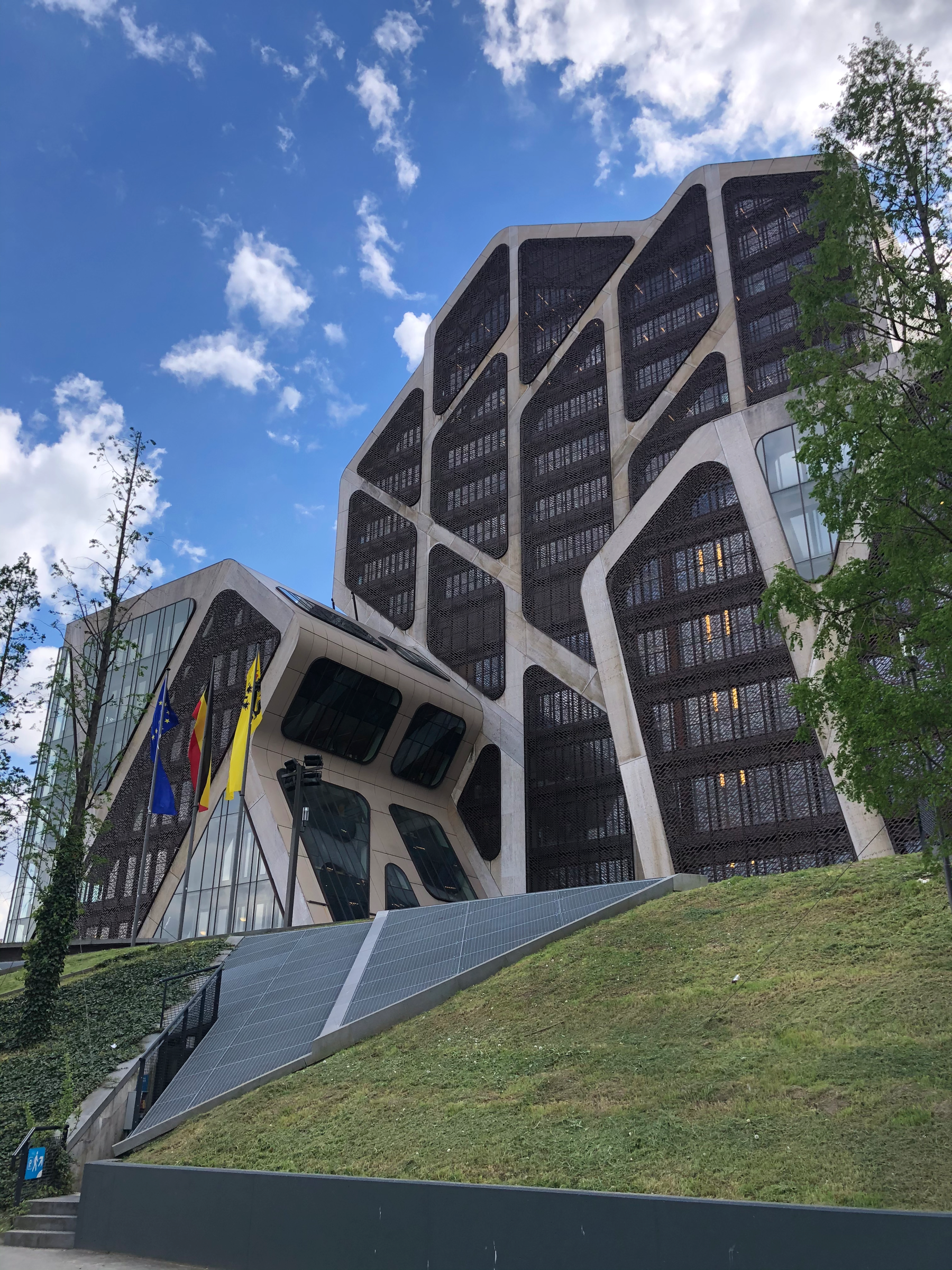
The building is comprised of three parts: the courthouse, a law university library and office space with a 365-degree restaurant on the top floor. Usually courthouses are off limits to the public and it wasn’t until later that I learned you’re free to enter and walk around the building as you please. When I paused for lunch in town, the waitress at the cafe asked how I was enjoying Hasselt. The first thing I blurted out was that I adored their courthouse. She then gave me a look like I had five heads and laughed. She told me she hated the building, not because of the architecture, but because she had appeared in court too many times fighting parking tickets!
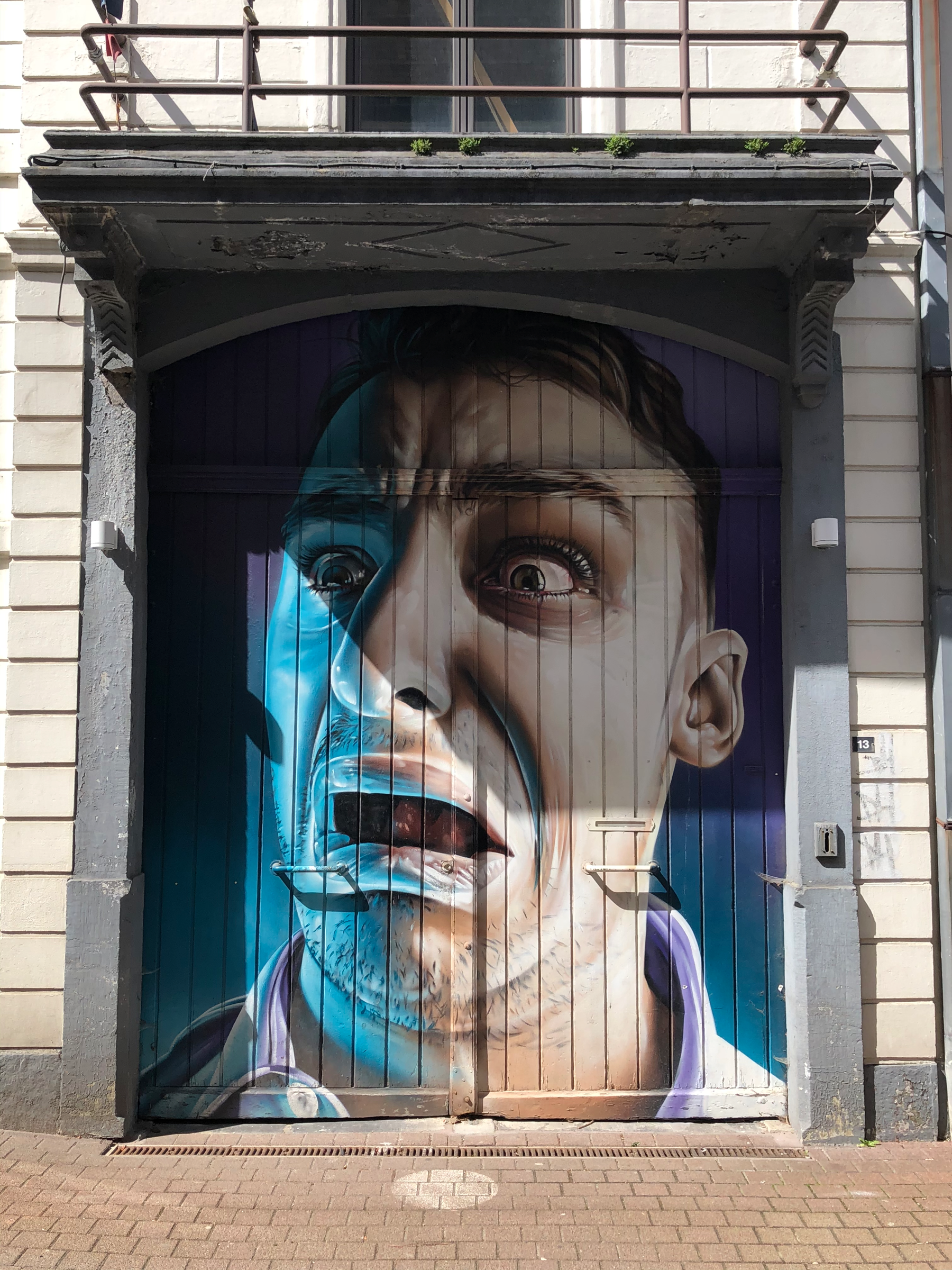
This piece, by Australian artist Smug One, is located around a sharp corner of Hasselt’s twisty labyrinth of corridors and back alleys. As I turned, I found myself just as startled as the man depicted on the doors, which only caused me to break into a fit of laughter at my own jumpiness. Sometimes we think of street art as painting in broad strokes, but Smug One employs a hyper-realistic technique that adds shading, crow’s feet around the eyes, a furrowed brow, the onset of a double chin and more. This is a level of detail that you would expect on a canvas that he has somehow managed to translate to the streets.
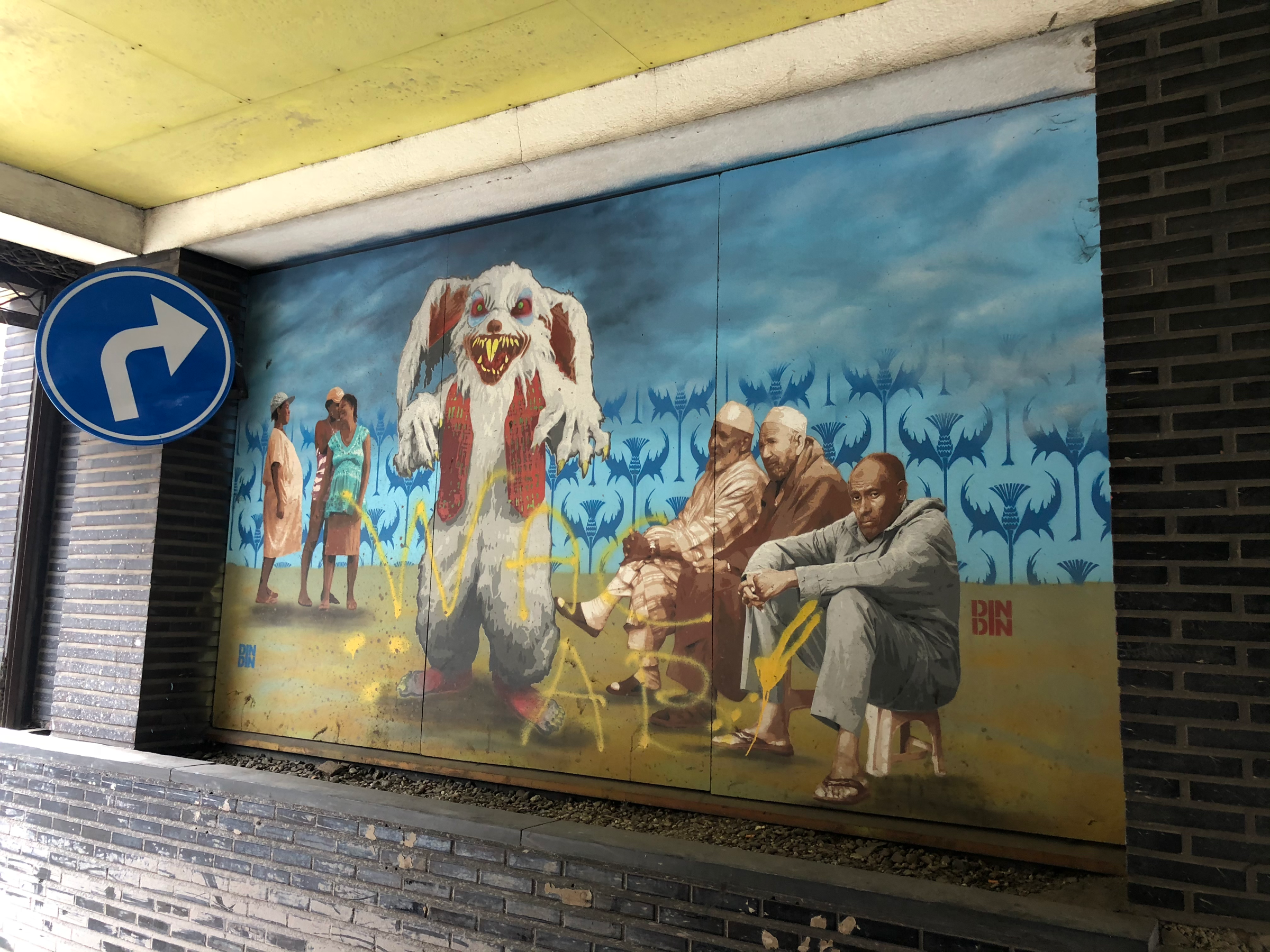
Street art is still mostly a man’s world, but Belgian artist DinDin has established herself as a female perspective in the genre. DinDin creates stencils by hand that she then can use over again, allowing her to create characters, like the psycho bunny above, they appear in her other murals around Europe.
Japanse Tuin (Japanese Garden)
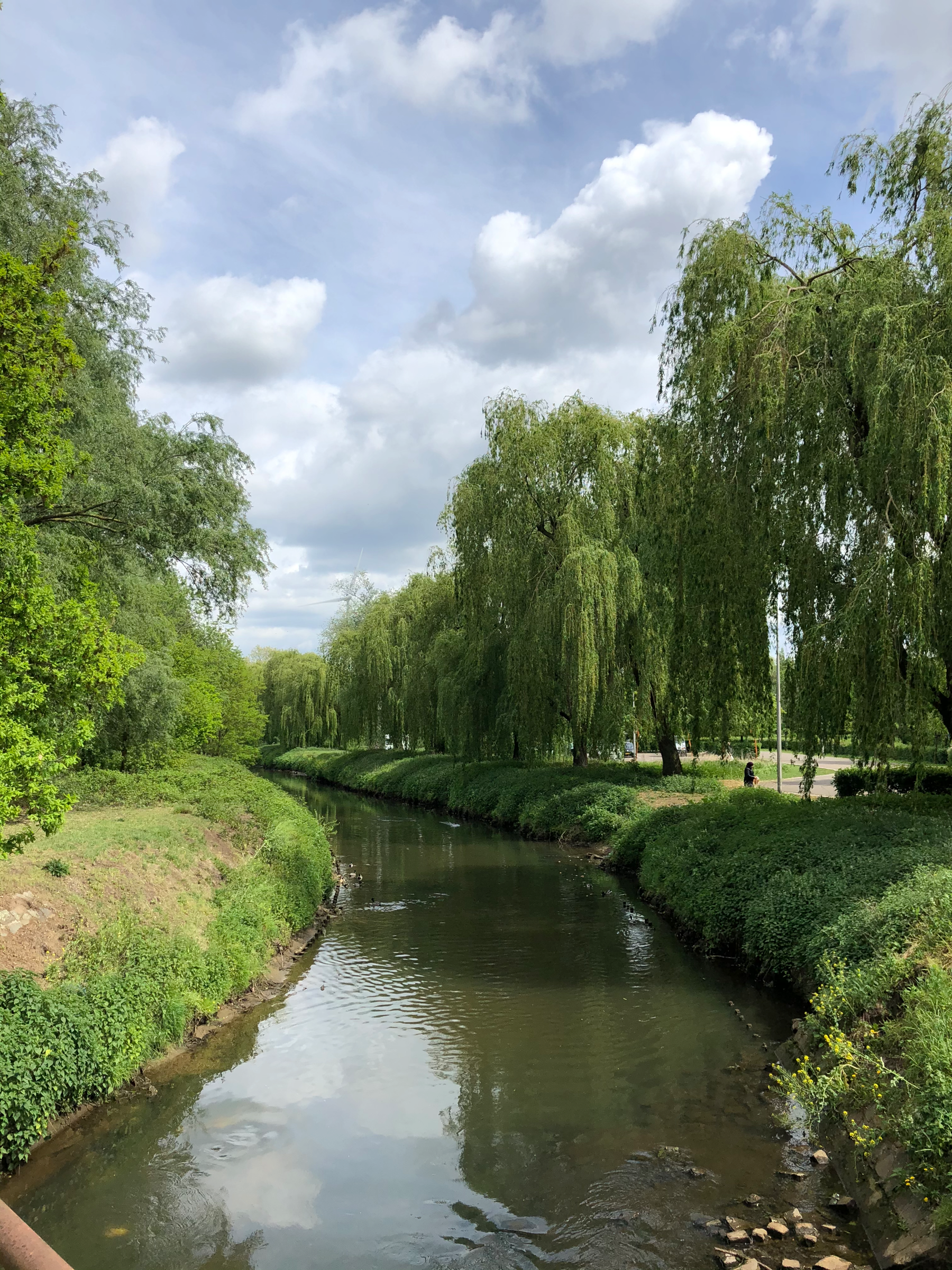
In the northeastern section of the city, away from the street art, abandoned factories and contemporary courthouses, you’ll find Kapermolen Park, Hasselt’s prime green space that opened in 1982. A decade later, a portion of the park was partitioned off to build the Japanese Garden, a gift from Hasselt’s sister city, Itami, Japan. Upon its completion, the garden became the largest authentic Japanese Garden in Europe, a title it still holds today. The garden is a place for peaceful mediation and it would be prudent to behave accordingly.
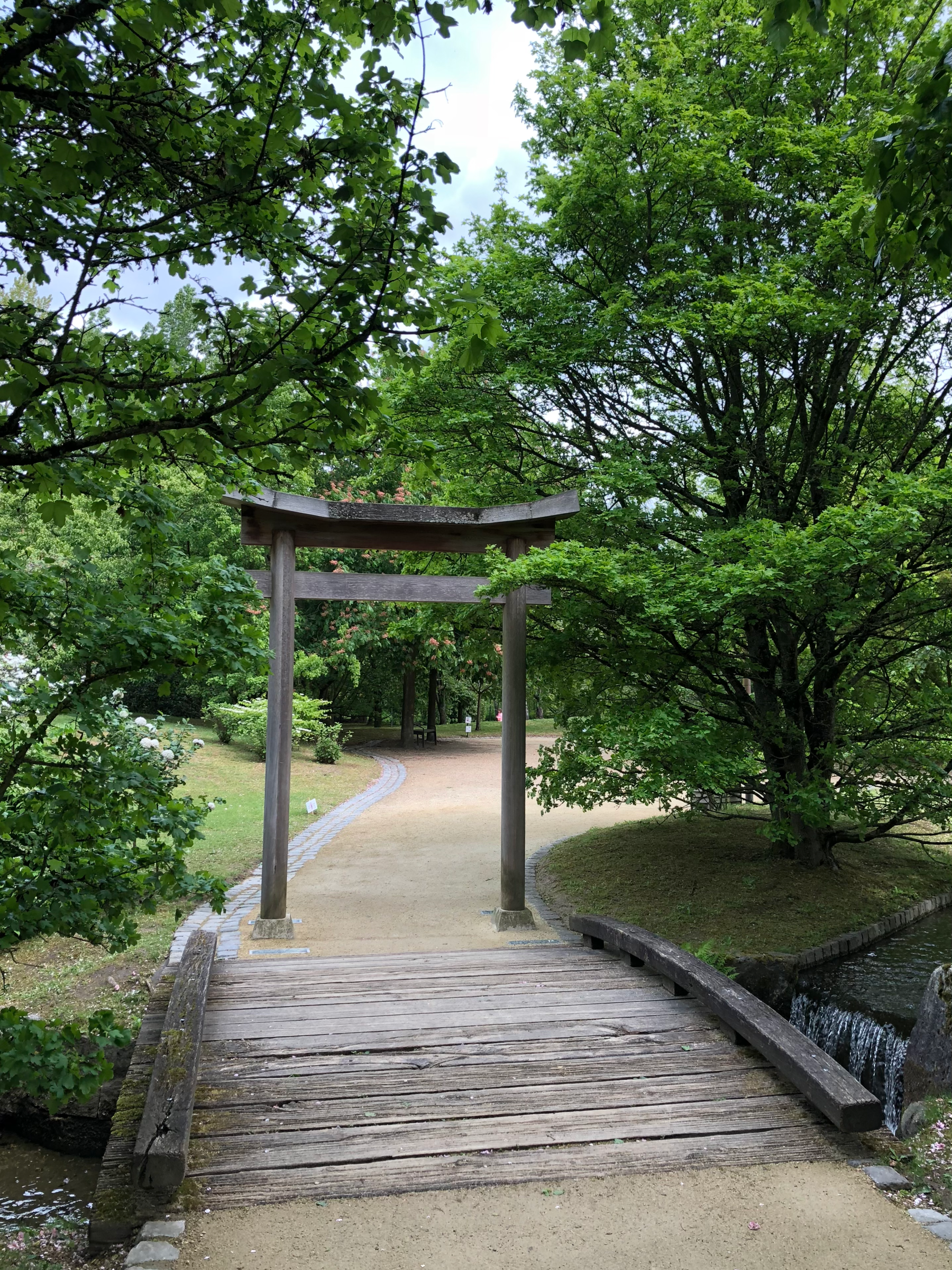
When you walk through the Torii and cross the bridge, you will hear water rushing underneath. From this point on, there isn’t a spot in the entire garden where you can’t hear the sound of water flowing. Also, because of the slopes and bends along the garden path, you can never see the whole garden from any one vantage point. Like one’s life, it is impossible to see all of it at once. There is always something new to discover and something old that fades into one’s memory.
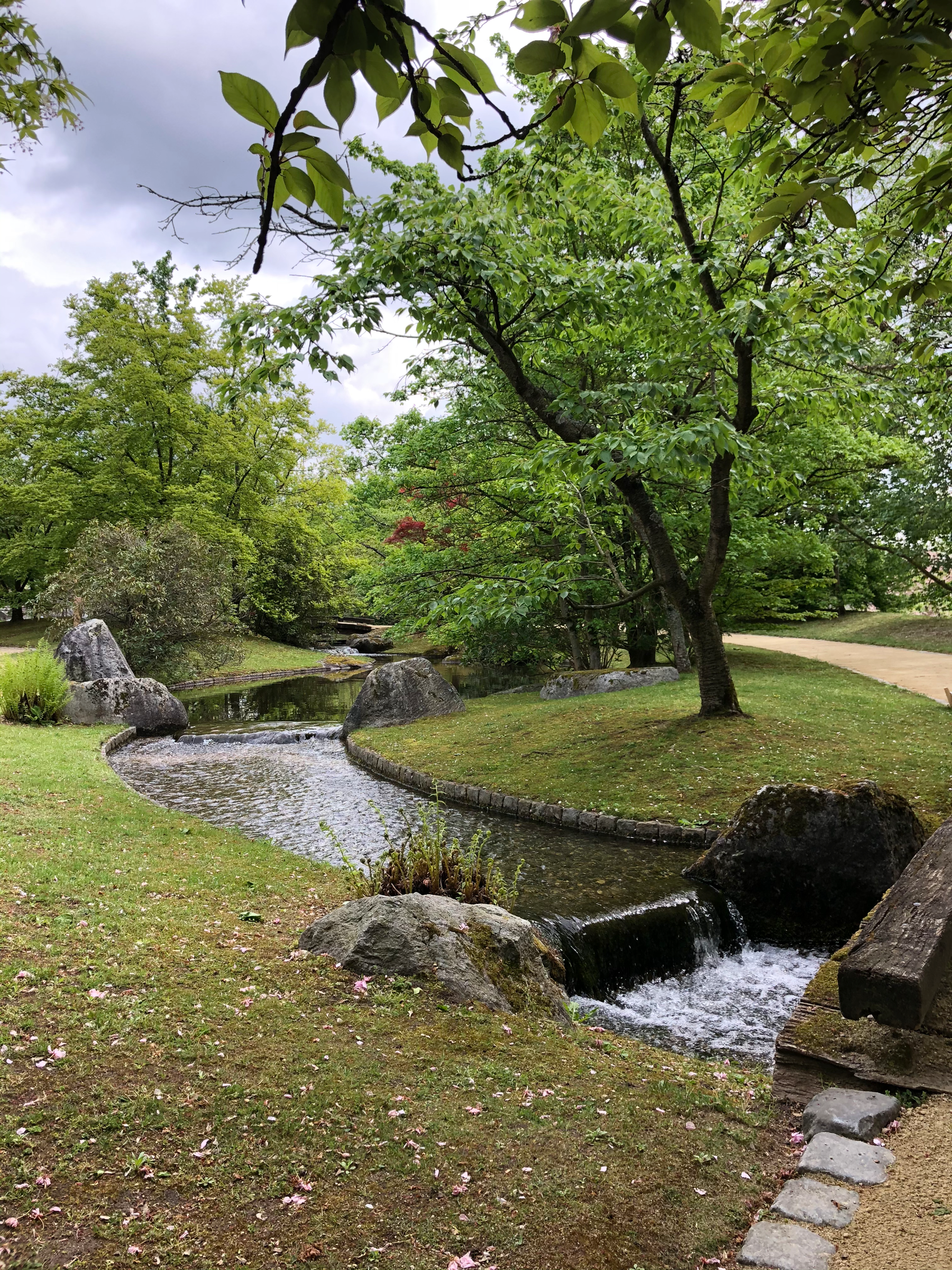
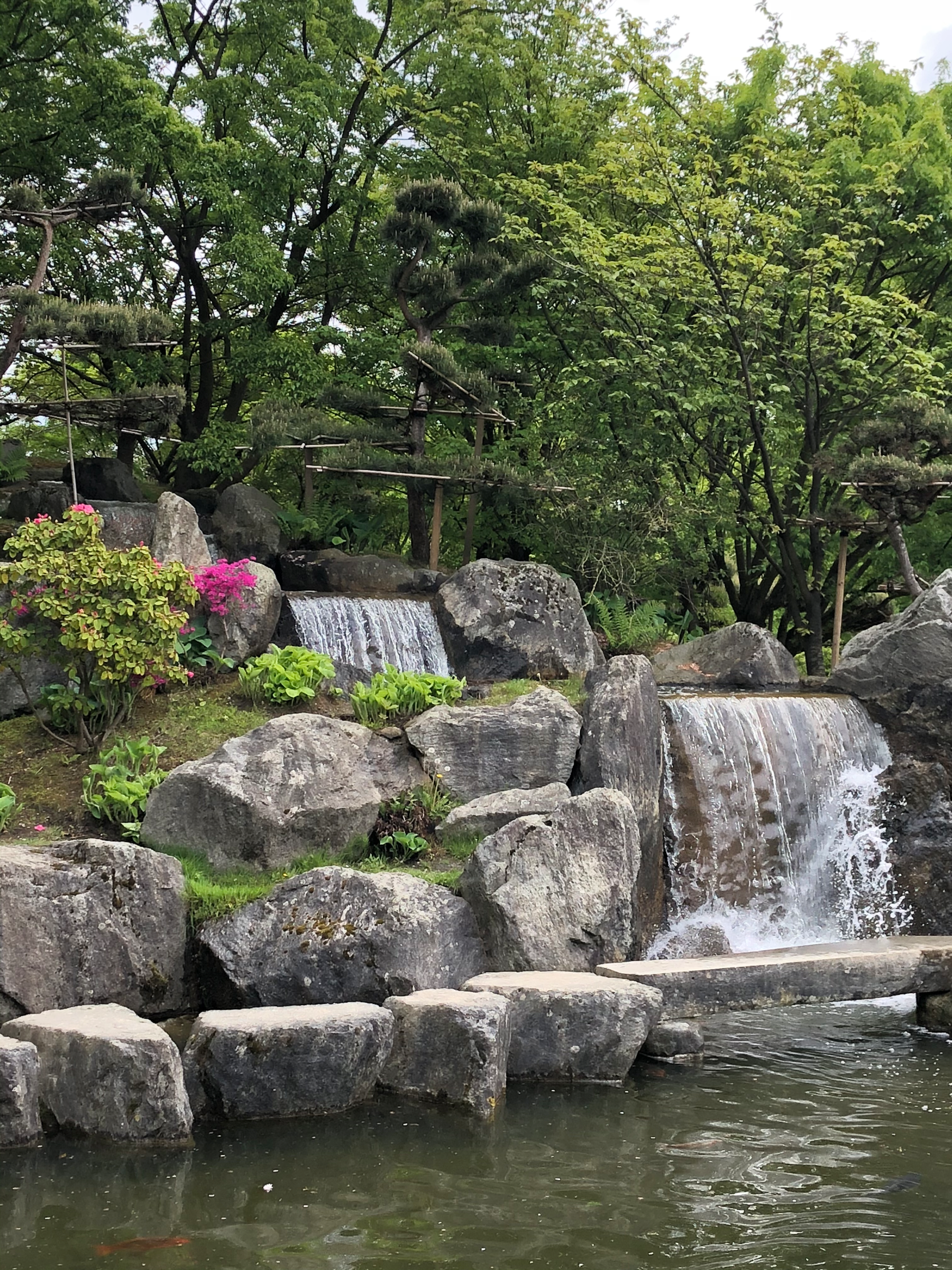
Water symbolizes life in Japanese culture and it begins with a burst of youth, cascading down the waterfall. The sound of water is louder here than anywhere else in the garden. The water continues to be funneled down a series of canal like streams where it grows more and more still, until it ceases to move all together in a pool representing the end of life. Irises were planted in this holding tank and you can cross a zigzag wooden bridge to view them up close.
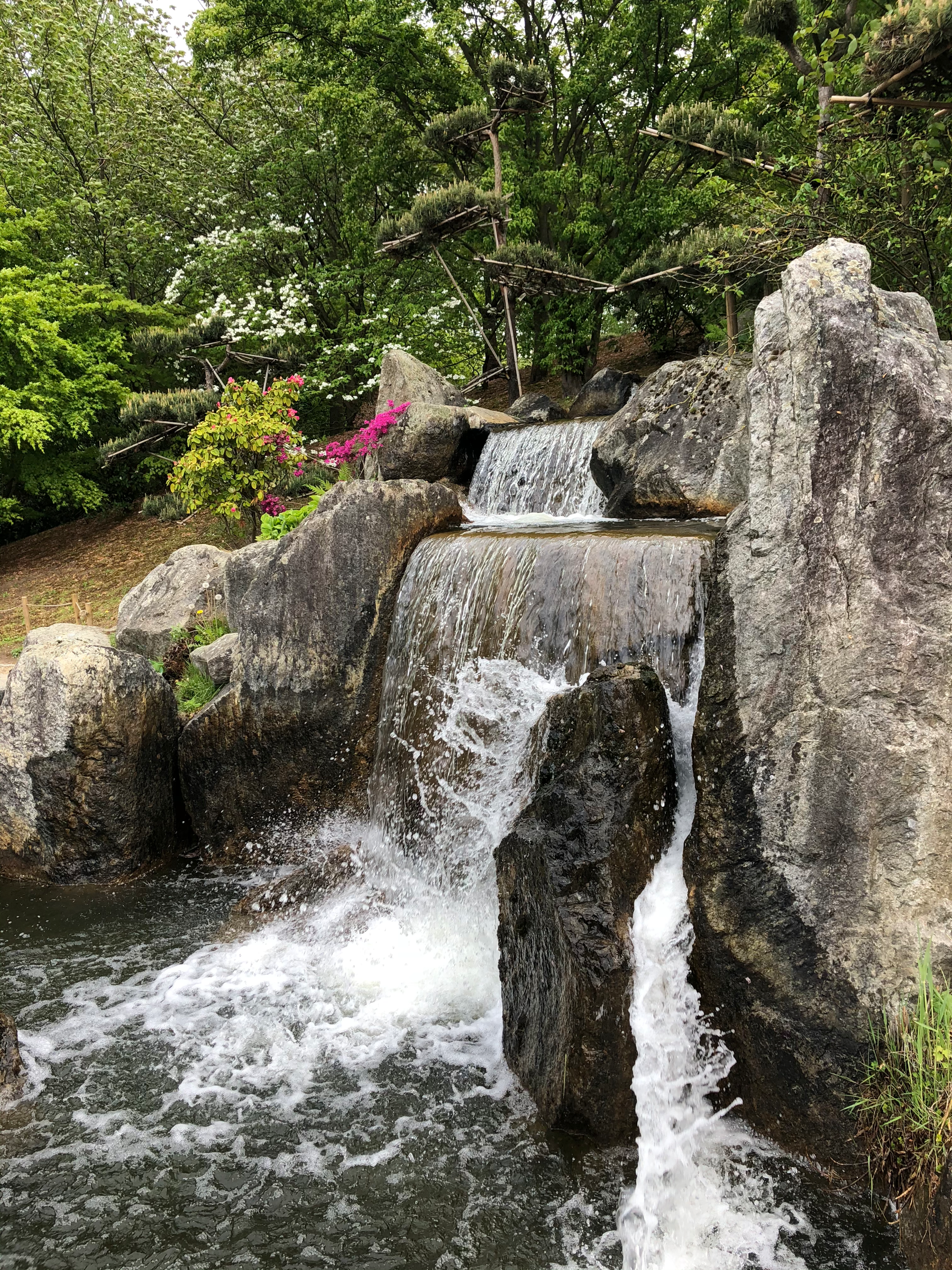
All of the rocks that comprise the waterfall we brought to the structure exactly as they were found in nature. None of the stones have been carved or shaped in any way. The rock on the right that appears to be jumping into the falls represents one of the koi, an ornamental carp, that inhabitant the waters. In Japanese lore, the koi must propel themselves up the side of the waterfall and if they are successful, they are transformed into peaceful dragons.
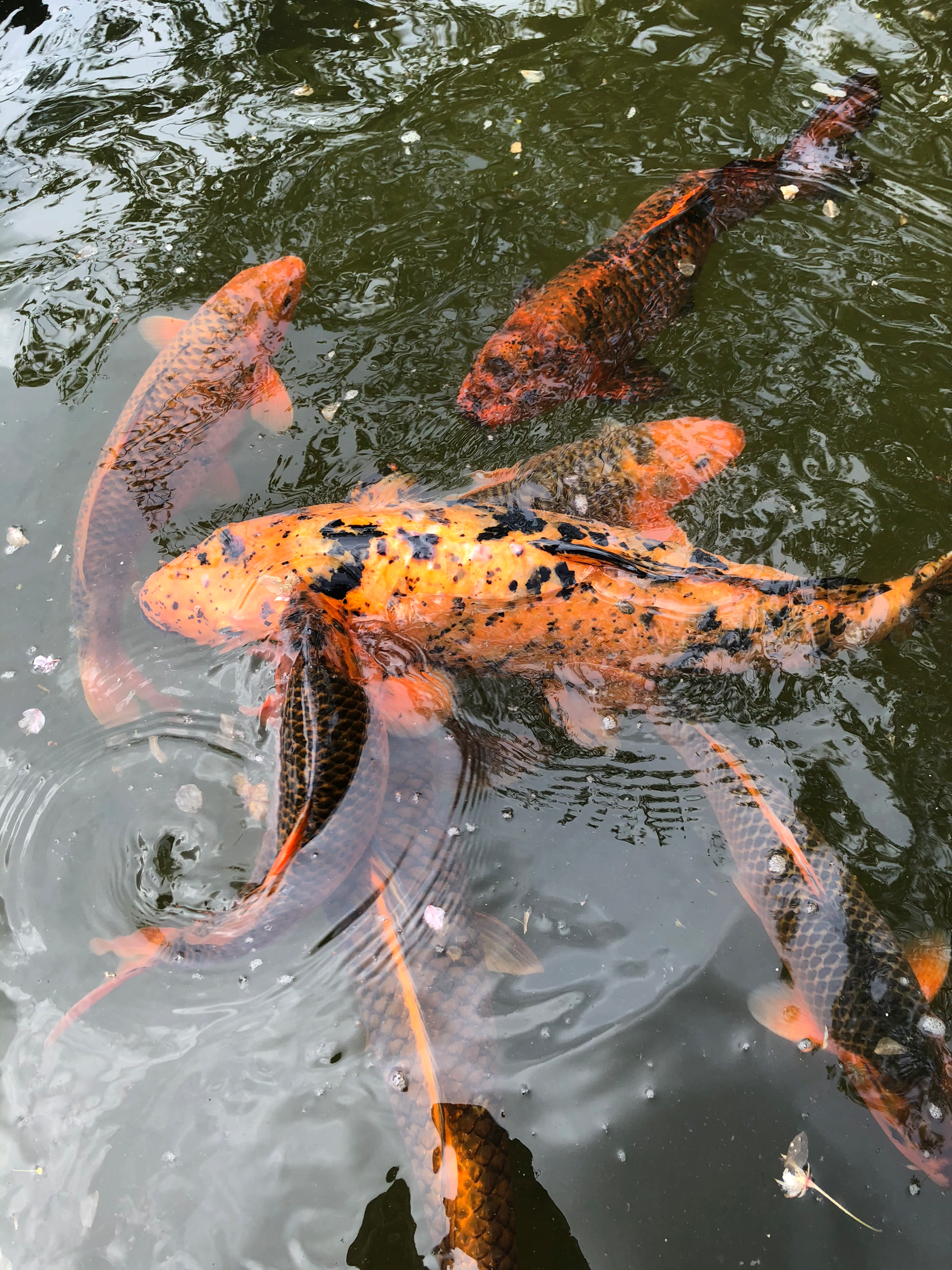
I loved the koi and had fun watching them. You can buy pellets to feed them, which most people do, so they’re not afraid of humans at all and will follow you along the path if they think they’re going to continue to be fed. There’s a pebble “beach” where you will find the largest concentration of the fish.
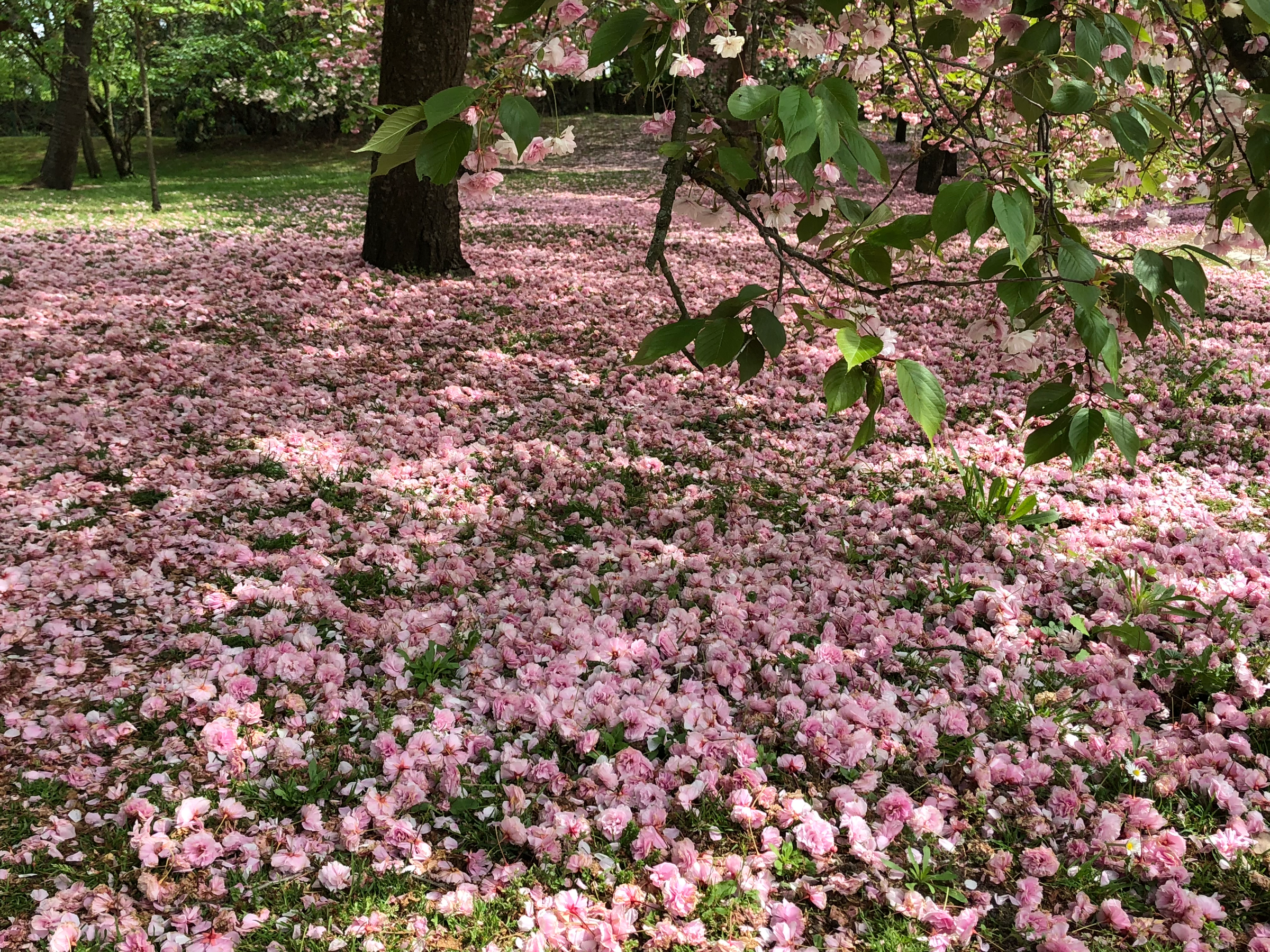
I really lucked out visiting the garden in May during the height of cherry blossom season. The back third of the garden is devoted to the sacred trees and the ground was carpeted with the fallen flowers. The scent from the blossoms was fragrant, delightful and just sweet enough without being overpowering. Everything in Japanese garden is well-balance and calibrated.
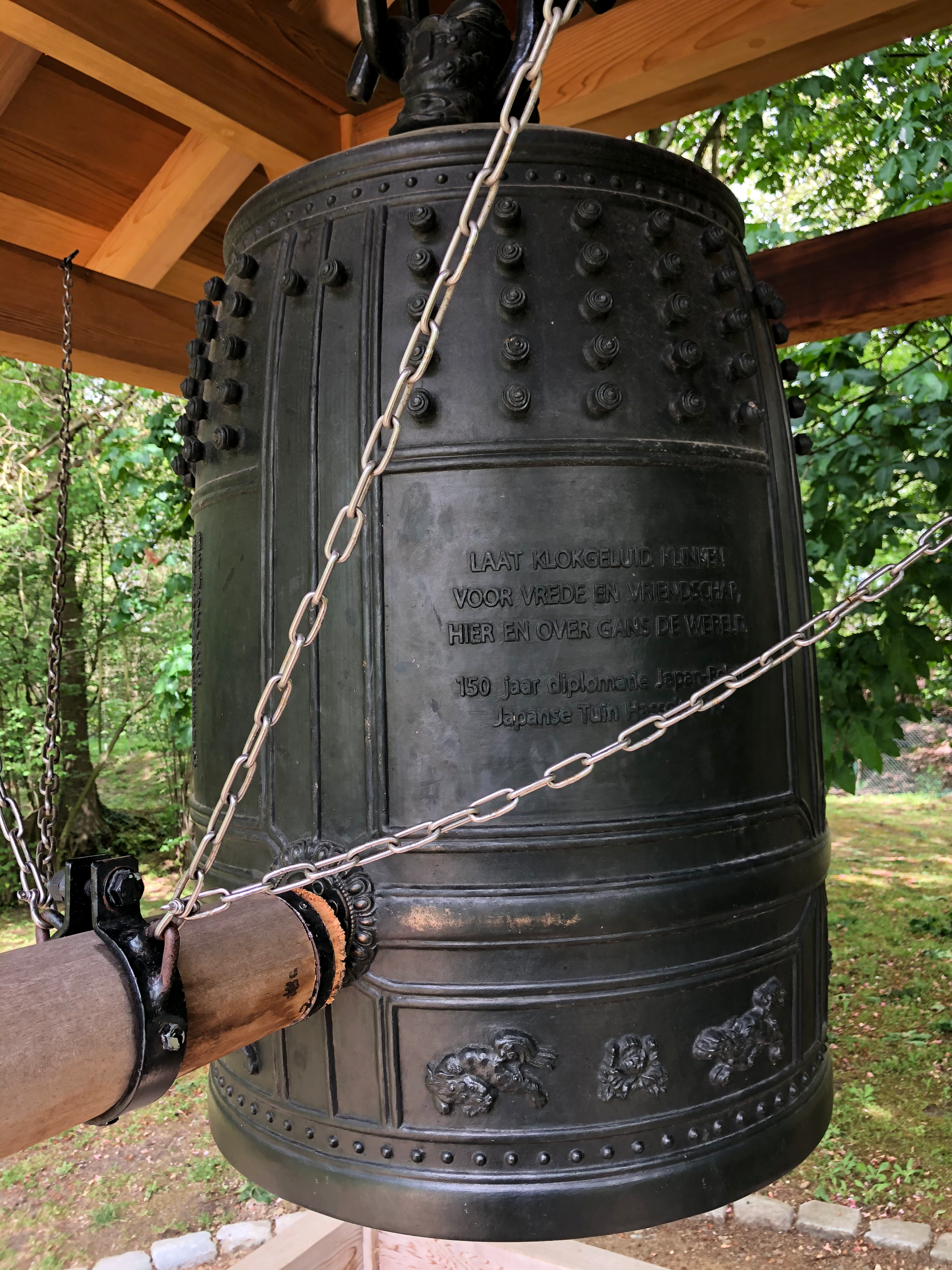
You are encouraged to ring the Peace Bell, which was added to the garden in 2016 to celebrate 150 years of Belgian-Japanese diplomatic relations. Beside the bell is a small Shinto shrine, at which travelers would stop, offer up a prayer and toss in a few coins before continuing on their way.
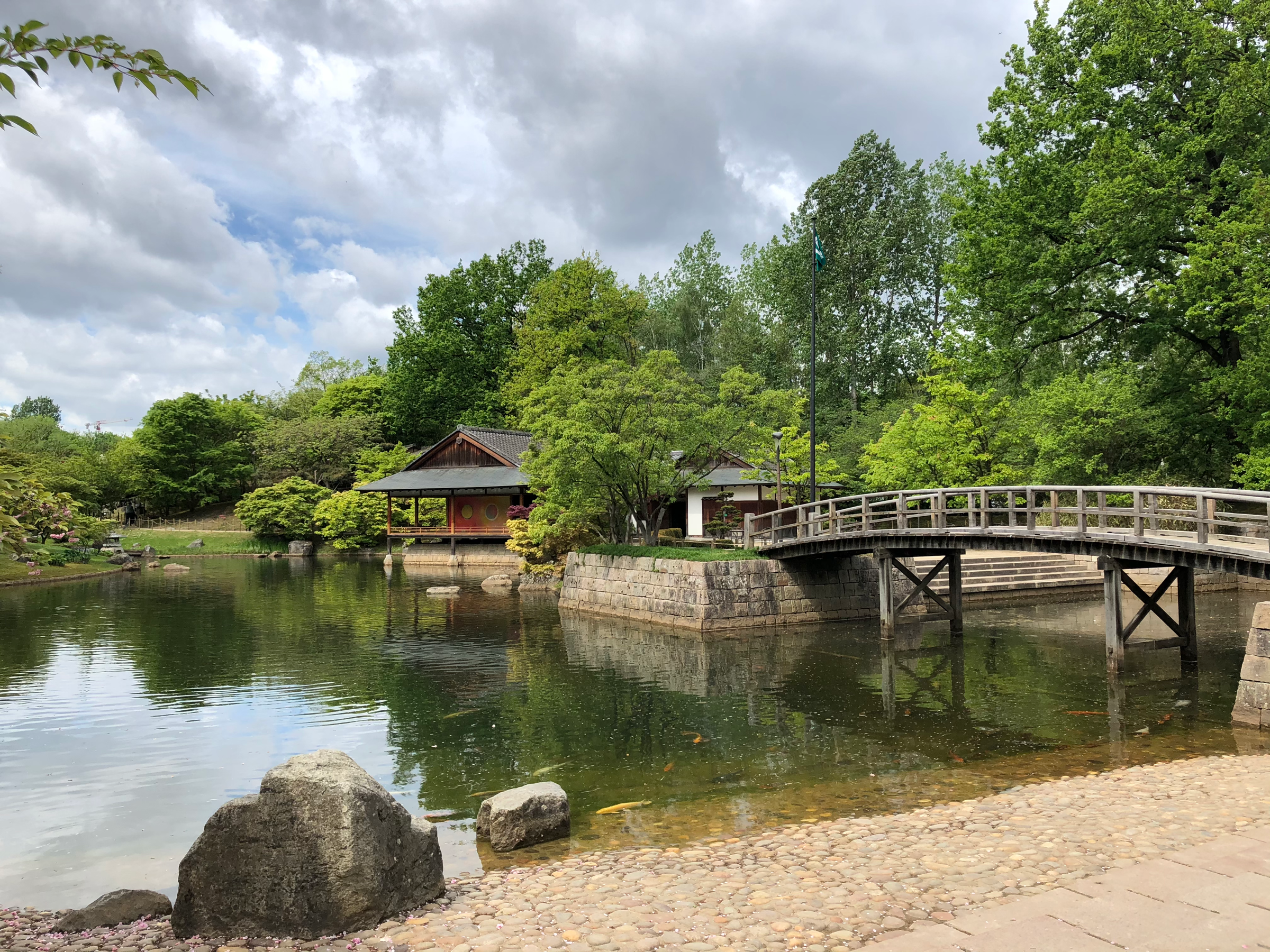
Up next is a Korokan, or ceremonial house that acts as a place of rest and refuge for travelers. The Korokan is made completely of natural materials: stone, wood, bamboo clay and paper. The house is raised on a latticework of wooden stilts that not only provides natural ventilation, but makes the structure resistant to earthquakes as well. (Perhaps the latter isn’t a real concern in Belgium, but an important traditional aspect of a Korokan nonetheless.)
Behind the Korokan is a ceremonial tea house that was off-limits during my visit while the staff attempted to re-grow the moss floor which had been damaged by visitors. The ecosystem of the garden is beautiful, but delicate. It must be properly tended and cared for at all times to avoid destruction.
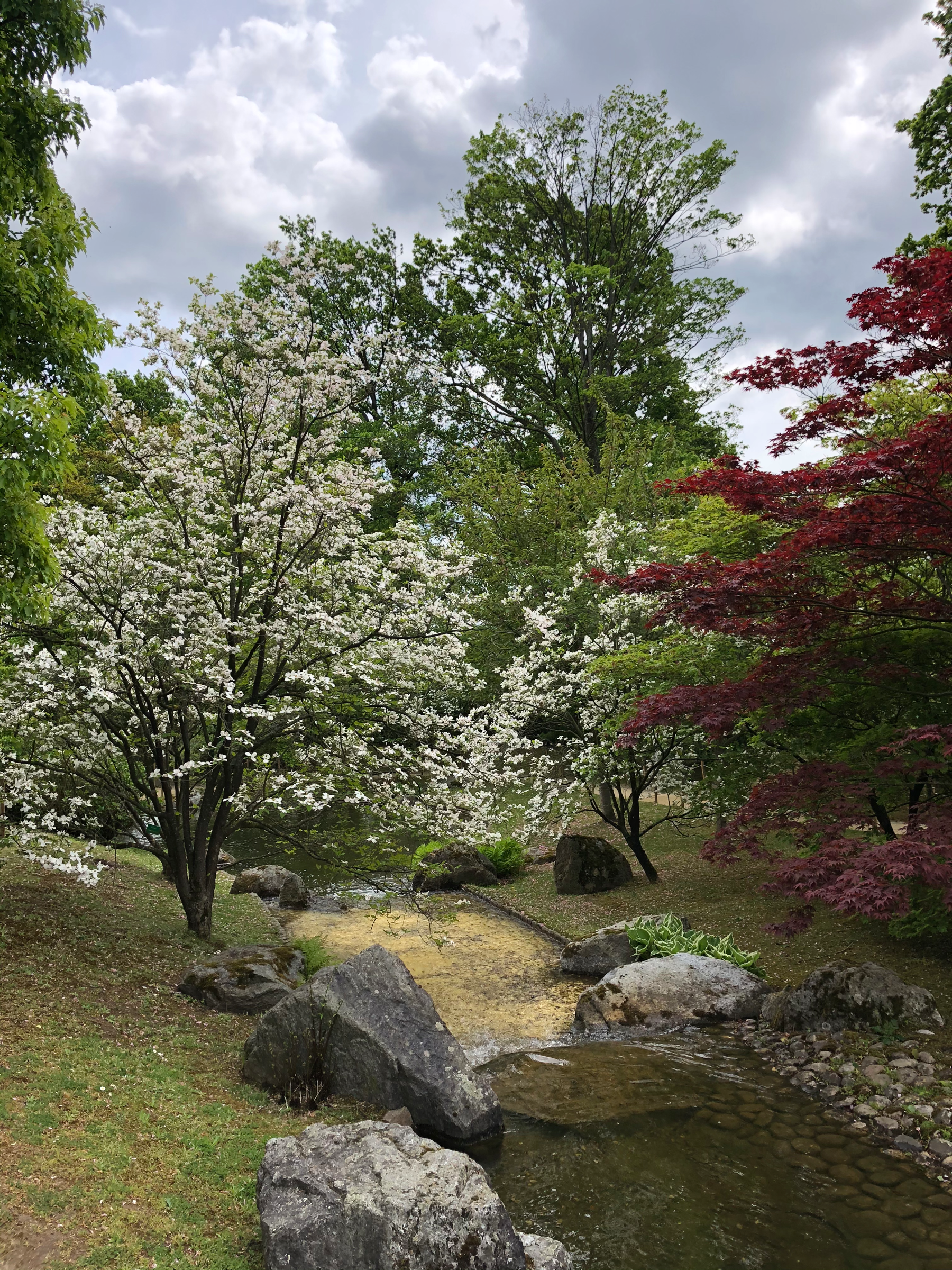
One tricky aspect of the garden was finding vegetation that would authentically be found in a Japanese garden, while still being well-suited for the Belgian climate. I’m sure the garden is nice to visit year-round, but I really appreciated experiencing the plants in full bloom. I put my amateur photography skills to work in an attempt to capture of the pinks and reds along the path.
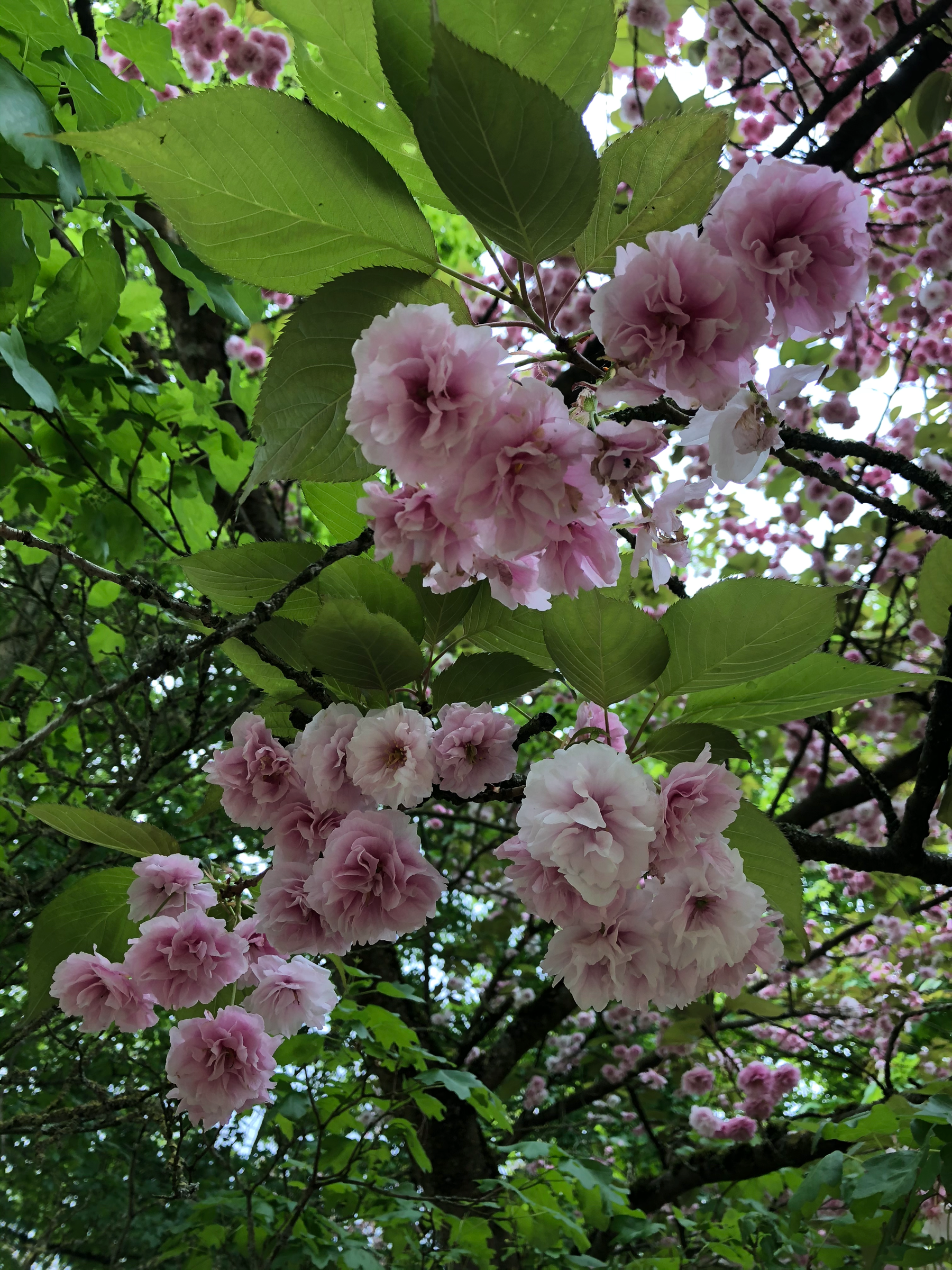
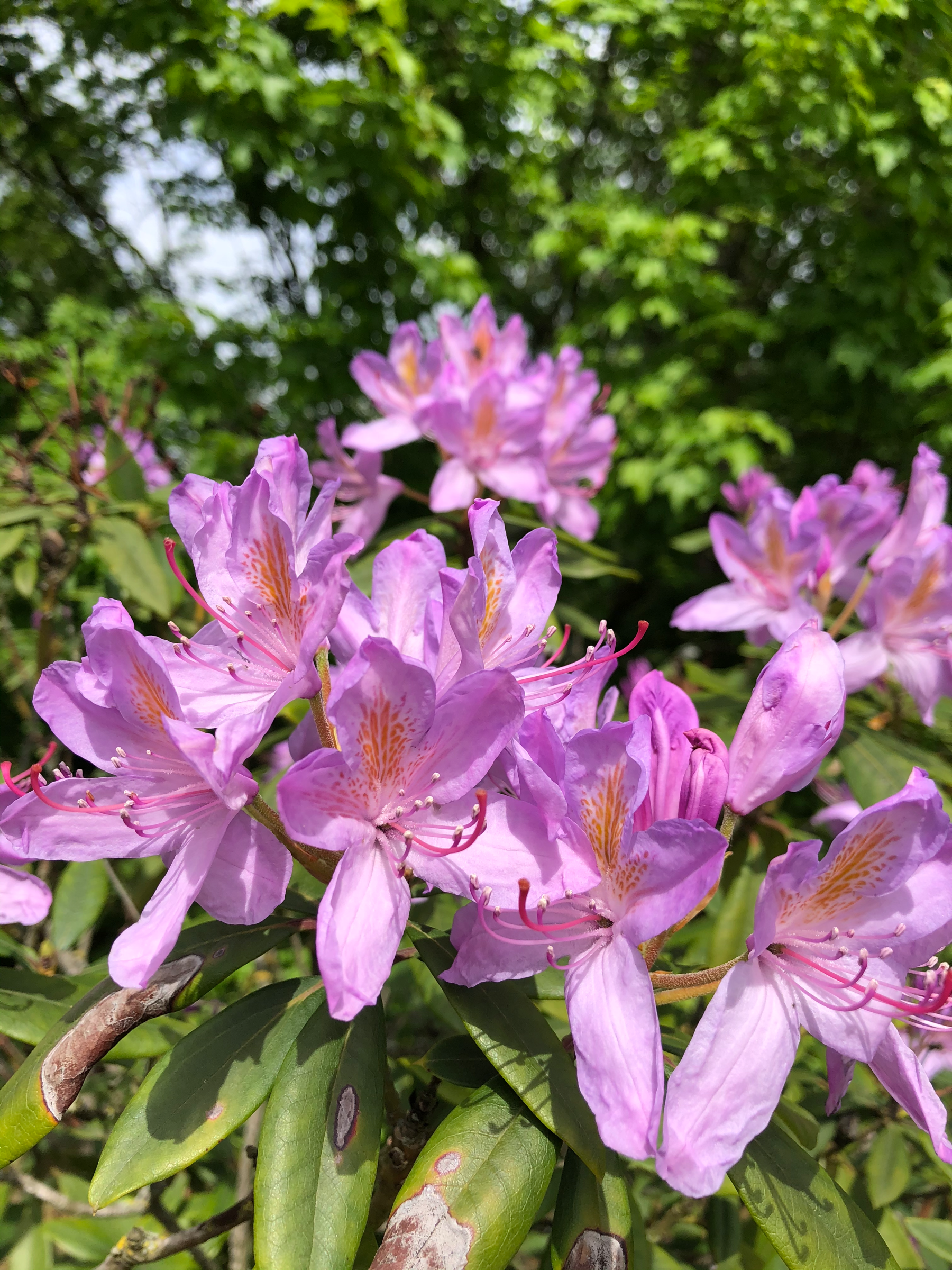
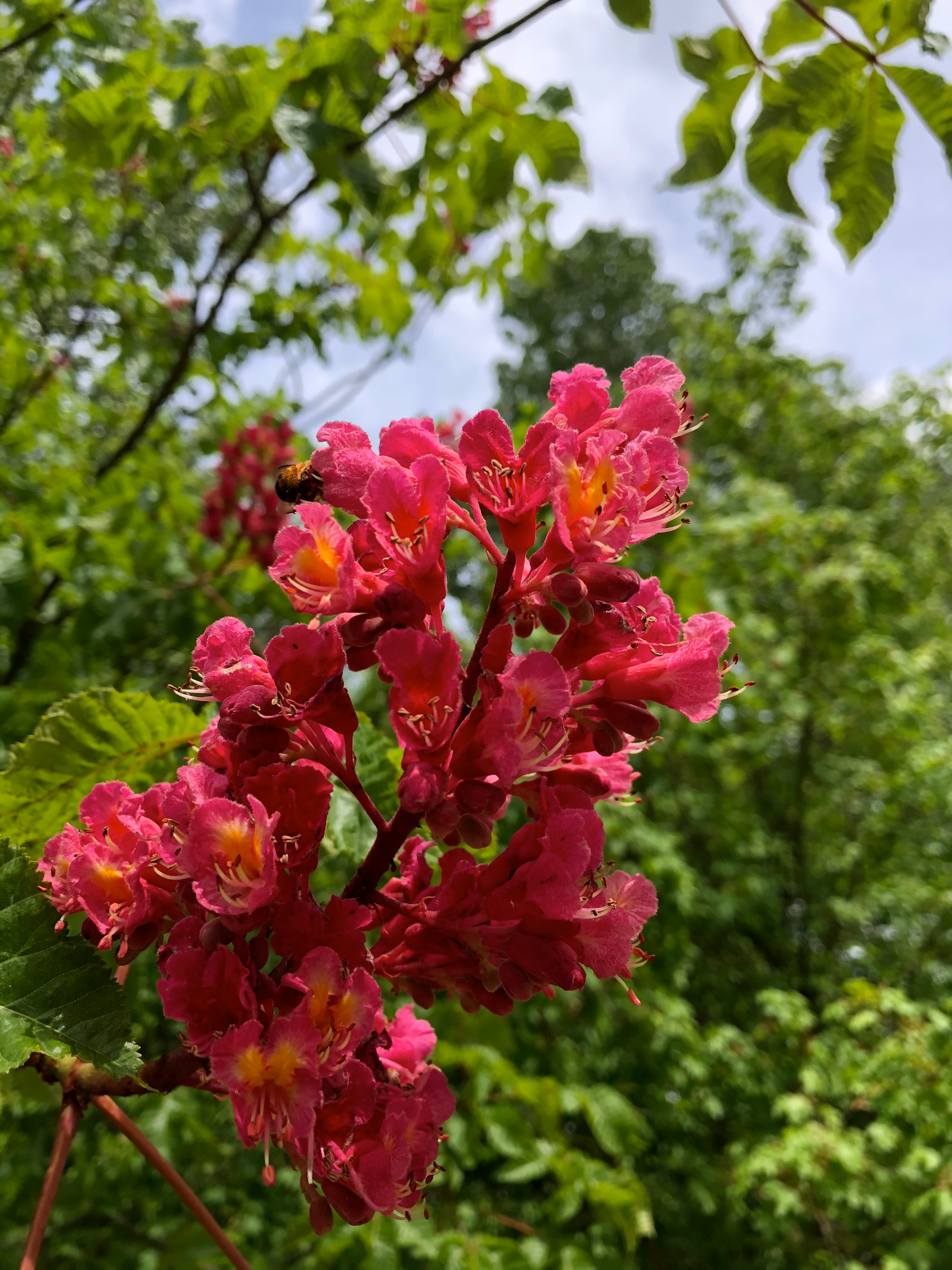
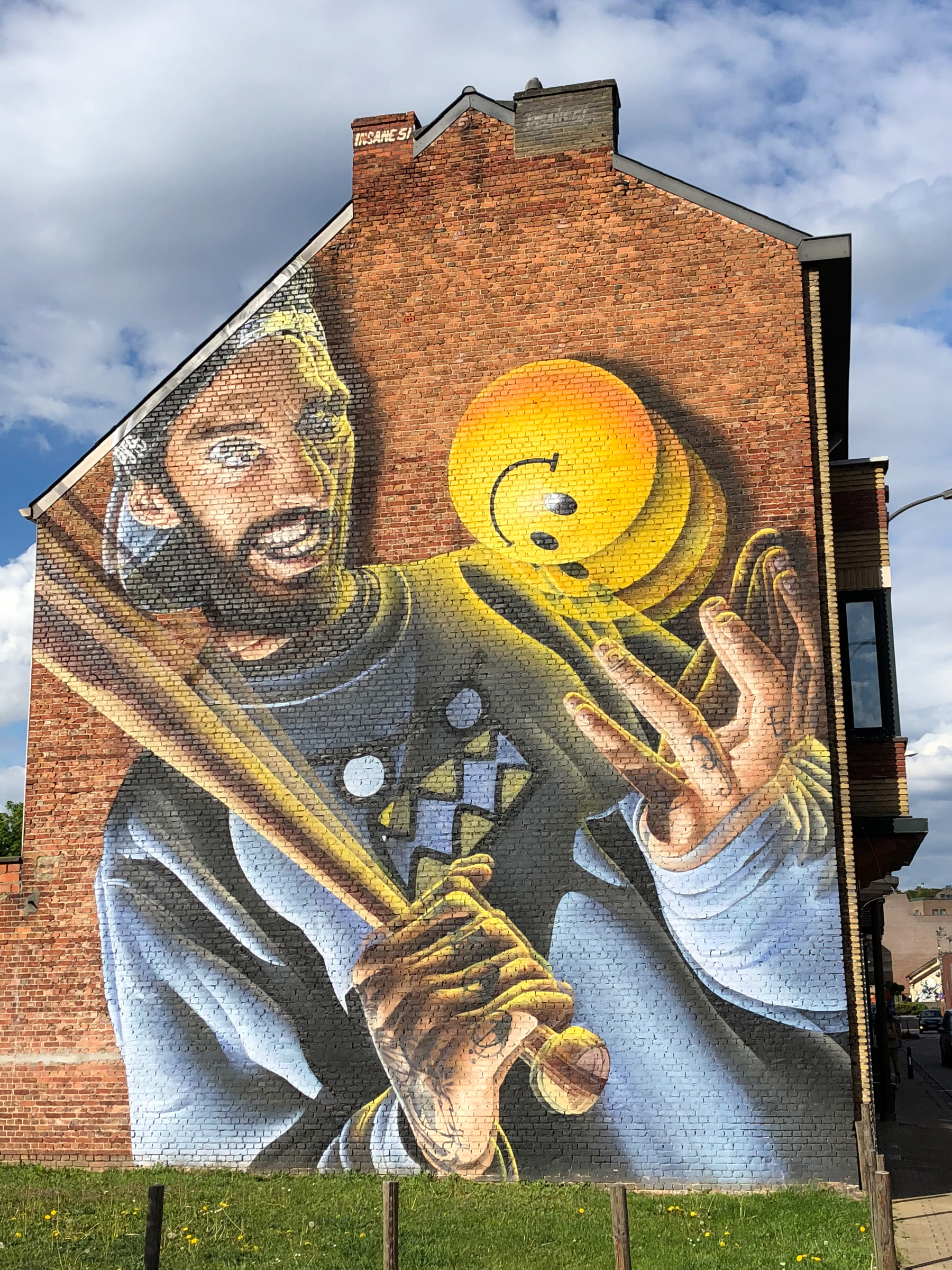
Now let’s head back to the street art one last time before concluding our time in Hasselt. Greek artist Insane 51 is all about creating optical illusions with his murals, including this humorous baseball player ready to knock this smiley face right out of the park.
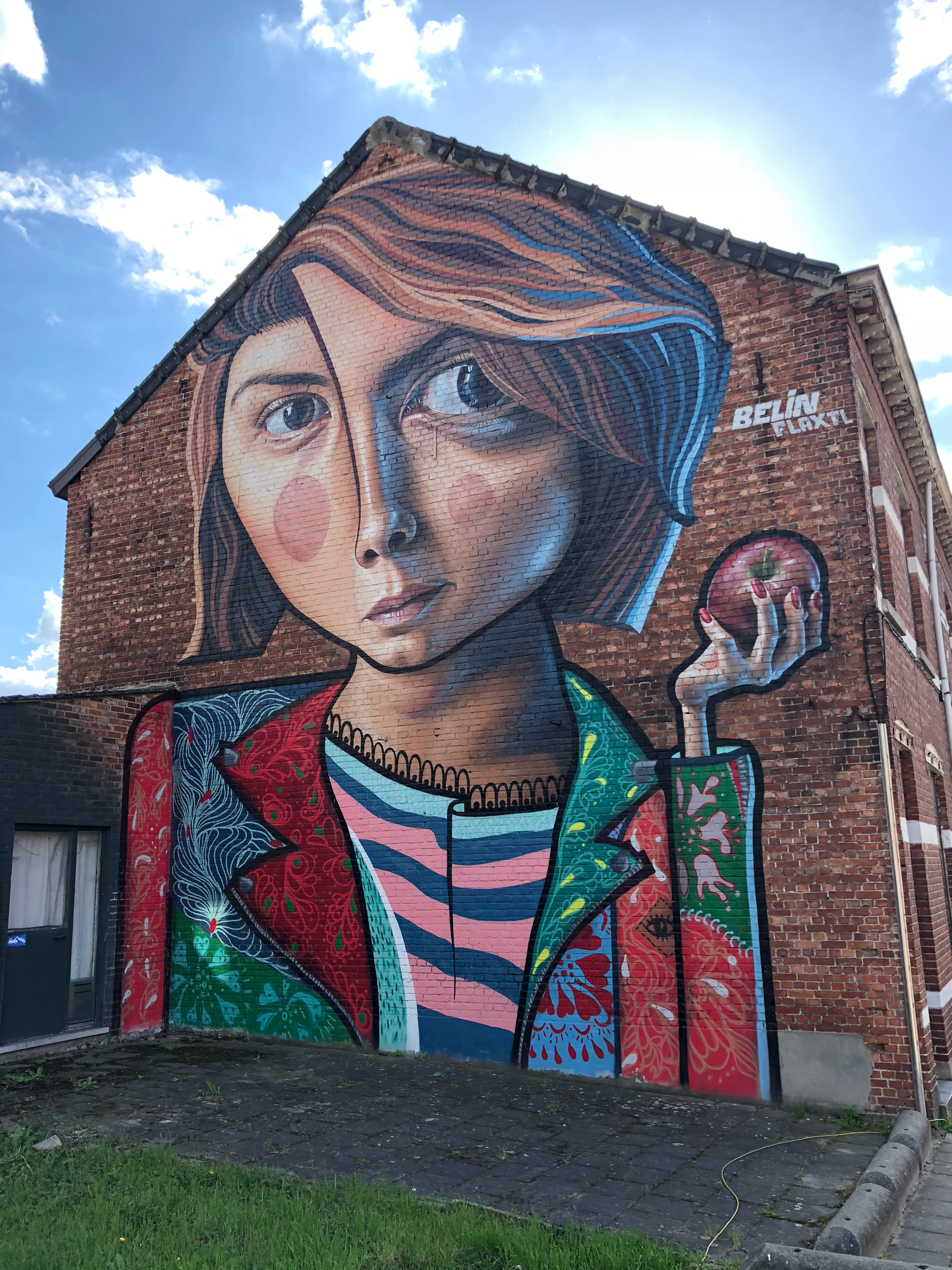
Belin is a Spanish artist who takes inspiration from cubism and surrealism, as can obviously be seen above. This image has become rather popular and can be found on t-shirts around town. Overall though, I think Hasselt has done a good job walking the line between promoting their street art and cashing in on an over-commercialization of what they have to offer. Despite the maps and apps, the murals can be difficult to find. You may know the general area, but the art is often tucked away down alleyways or in the rear of a residence where you don’t feel like you should be walking.
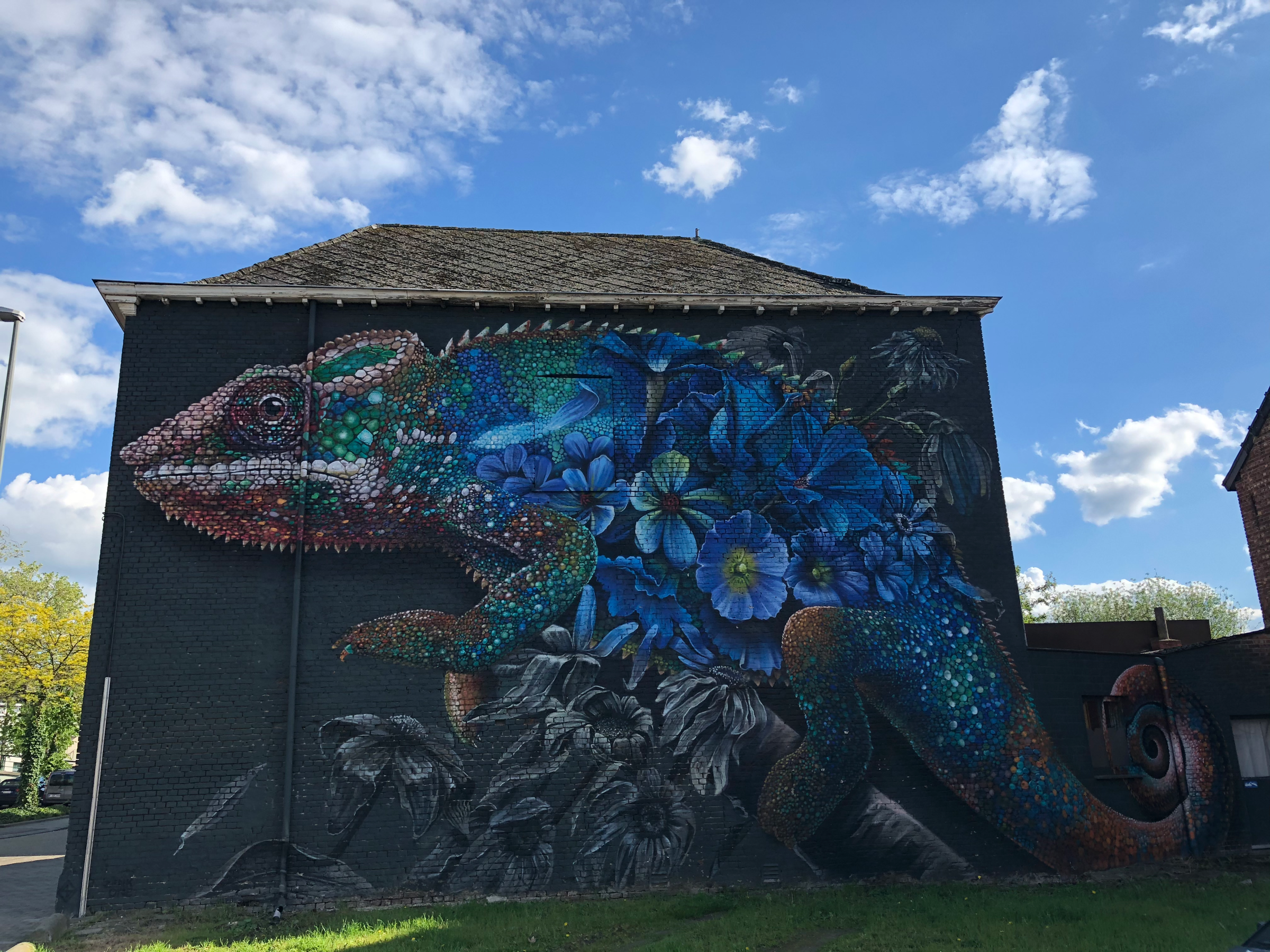
Last on my mini-tour of Hasselt is this beautiful chameleon by Stefen Thelen aka Super A, who is from The Netherlands and tries to depict surrealist scenes in realistic ways. He is often critical of the political sphere through metaphors and fantasy images. Here, the chameleon is on a dead branch with withered flowers, but instead of reflecting the rot, the chameleon’s skin is full of color and life.
While a day trip to Hasselt is more than feasible from the Belgian capital, I definitely crammed more than my fair share into a single Friday. There is one hostel in town right next to the train station, so if you wanted to spend the night and check out a few of the museums in town the following day, that would be an option as well. For the record, I think this is the first city I have visited where I didn’t have time to enter a single museum! (There is a Hasselt history museum, a Belgian fashion museum and a gin museum in a working distillery, so it wasn’t for lack of options.) The street art loop is 11km (7 miles) and a visit out to the Japanese garden will tack on a few more. Wear comfortable shoes because you’ll be in for a bit of a workout by day’s end.
My foray into Flanders rated a big A+. I hope to one day complete my report card and let you know how Wallonia fares.
